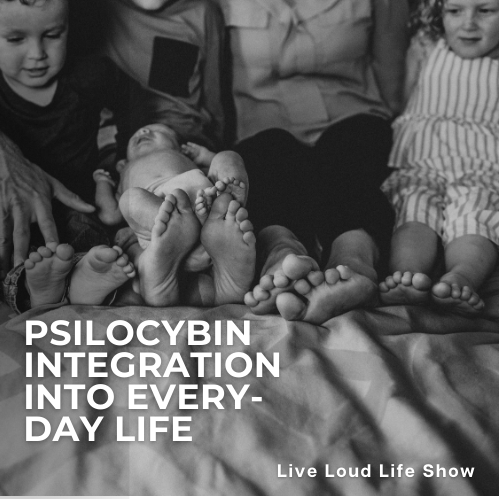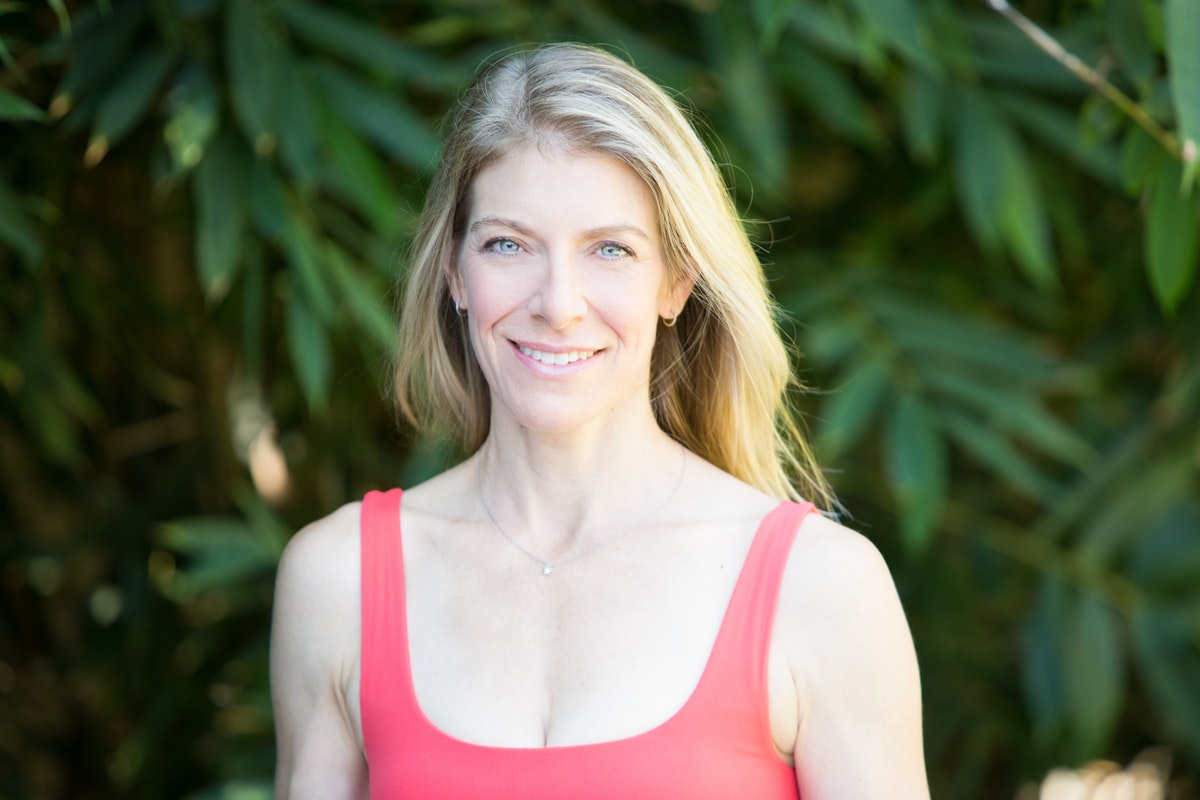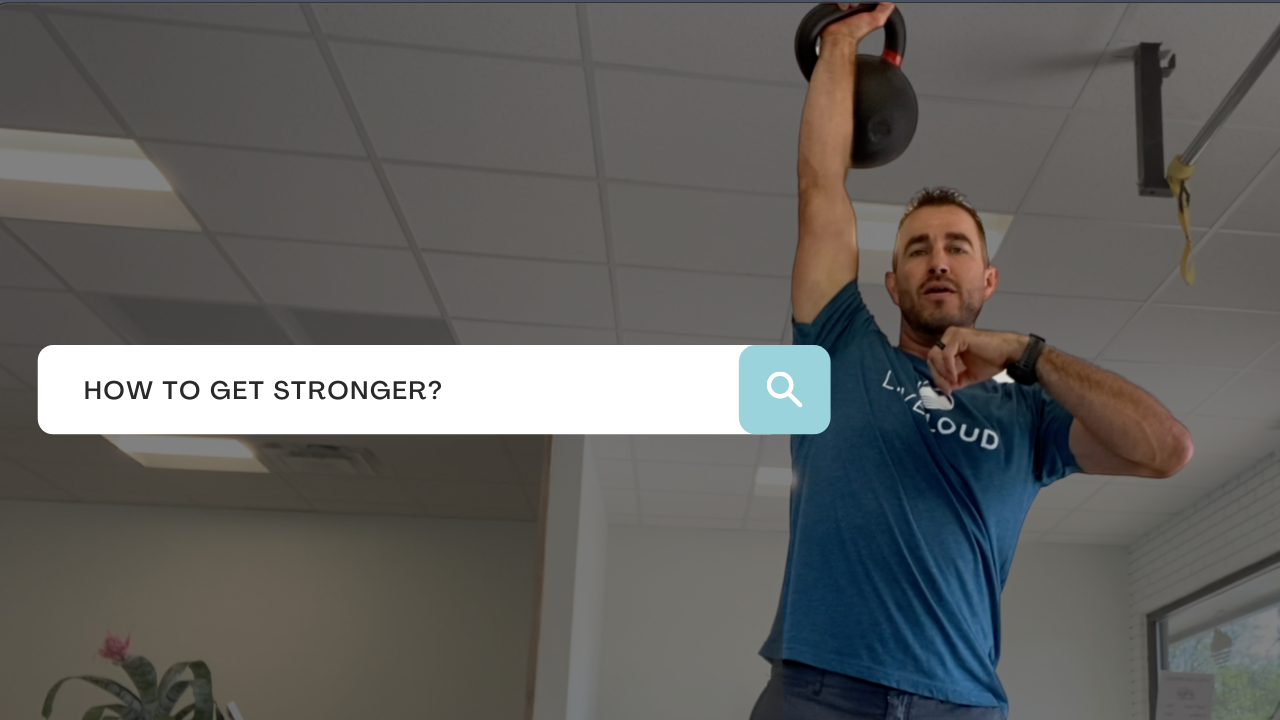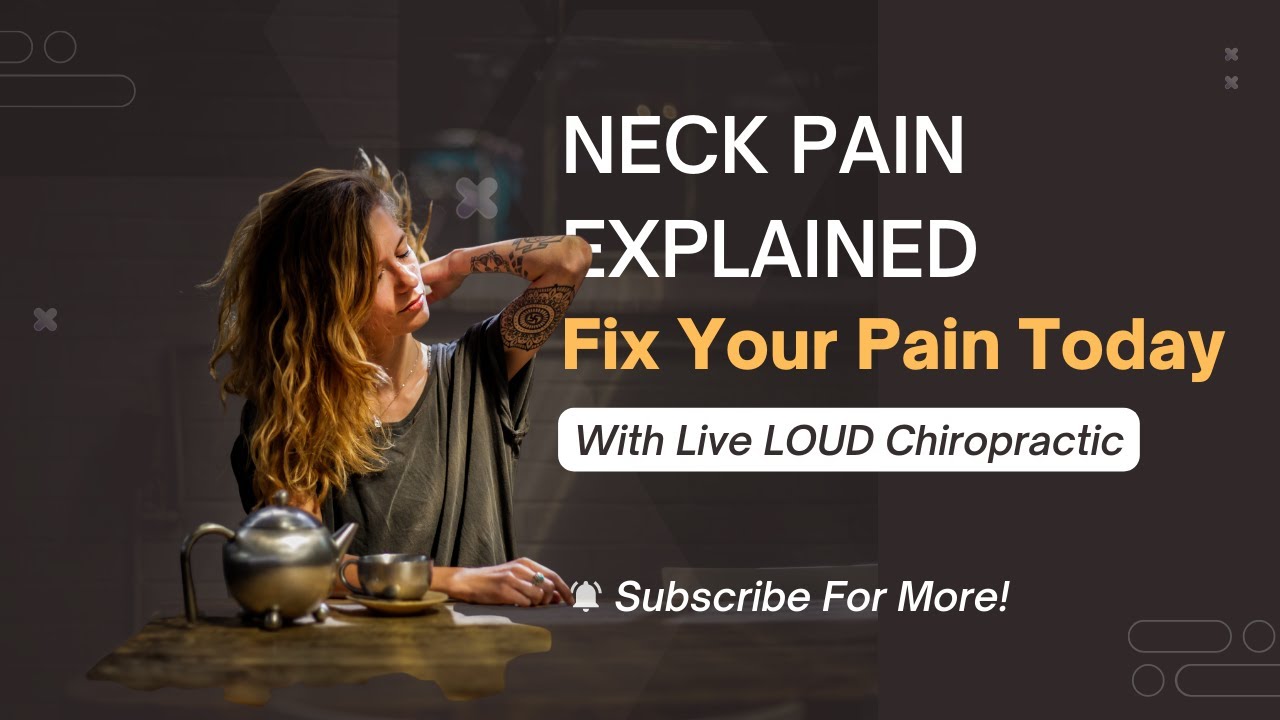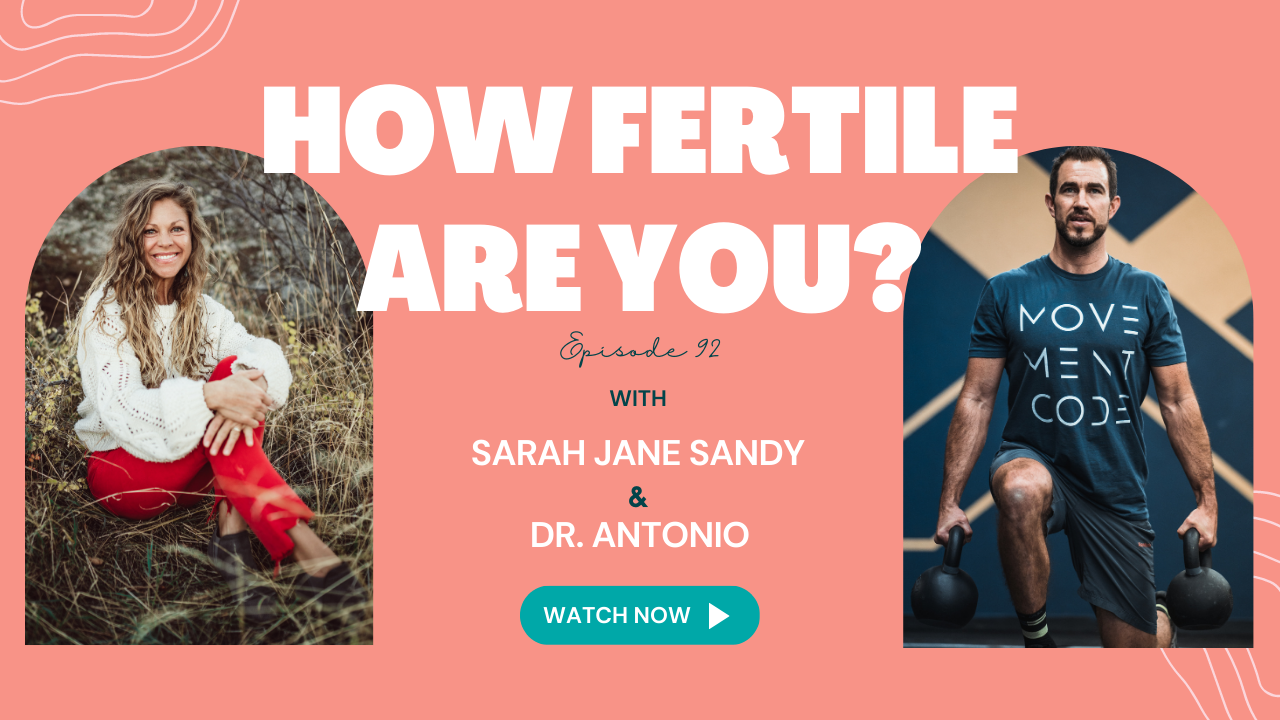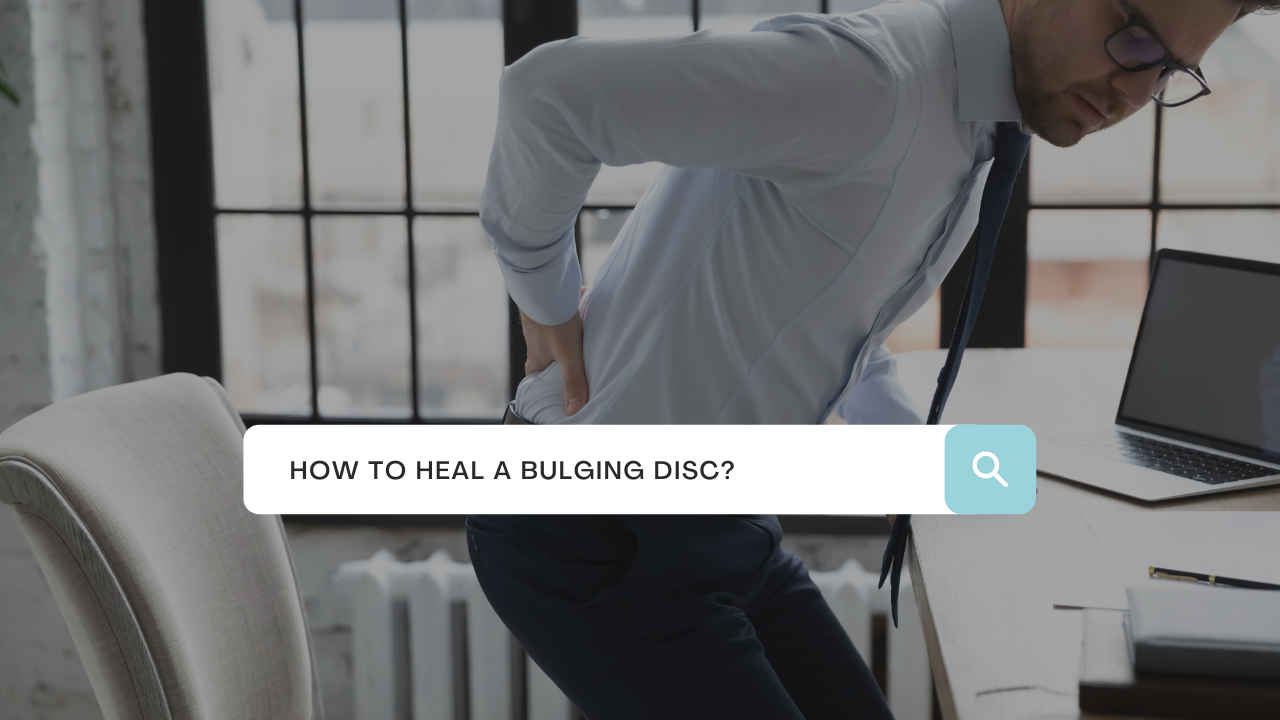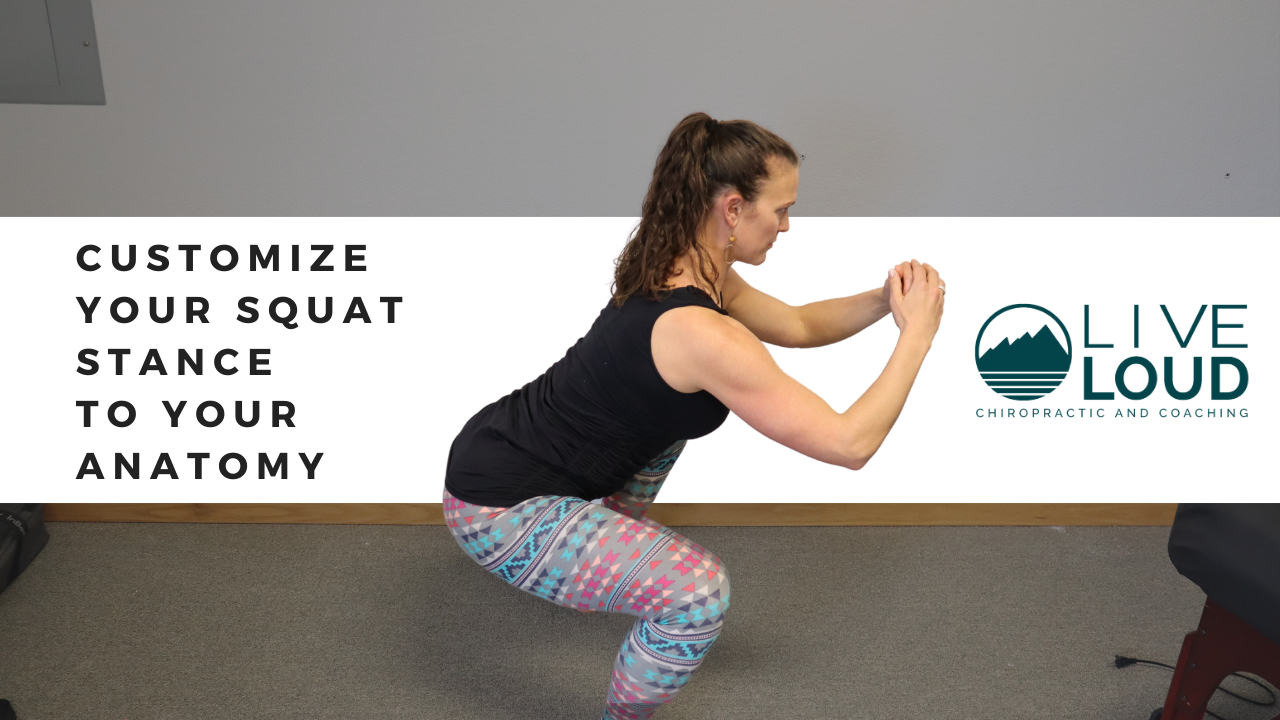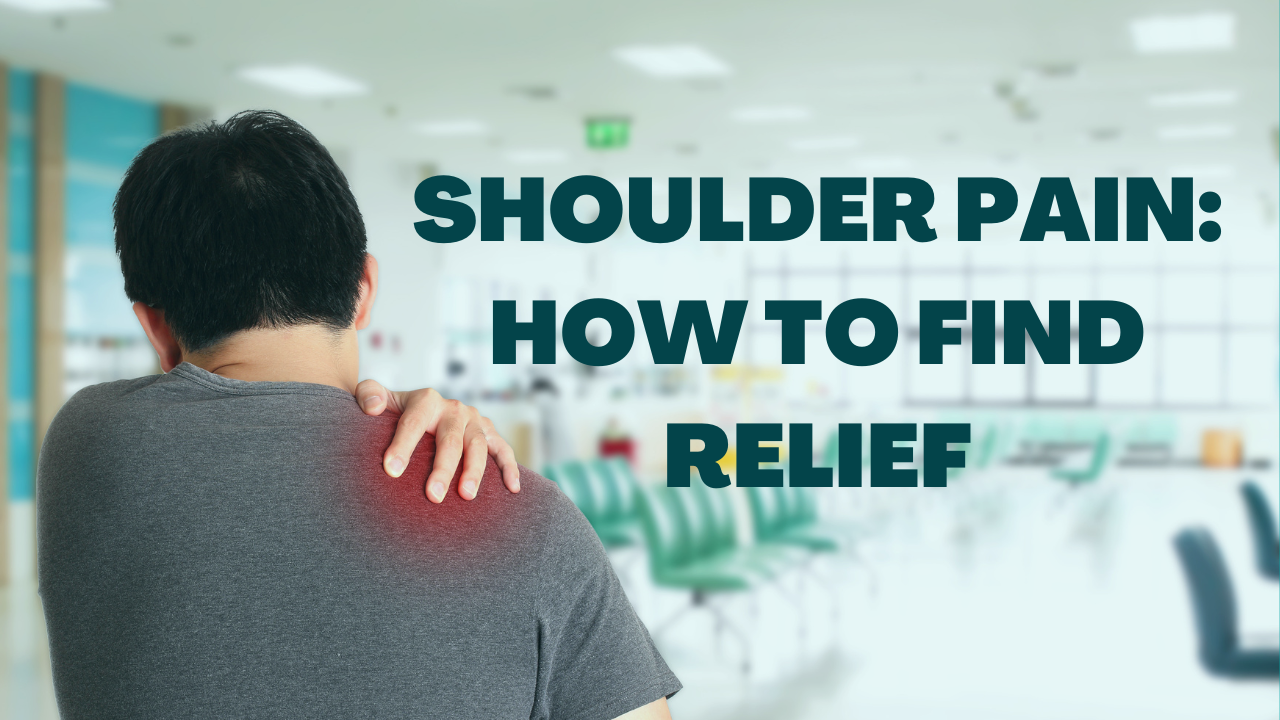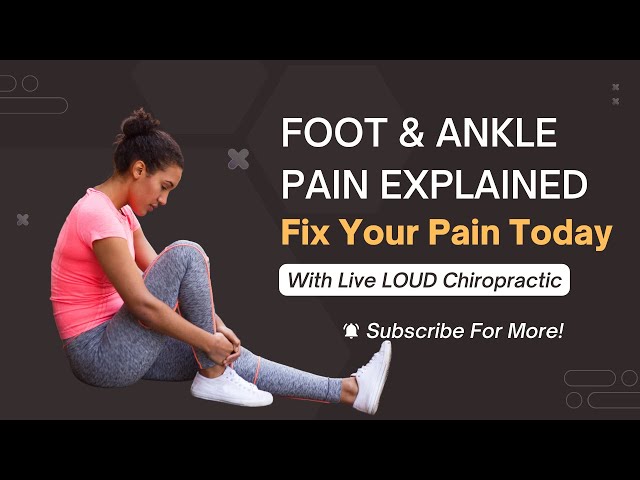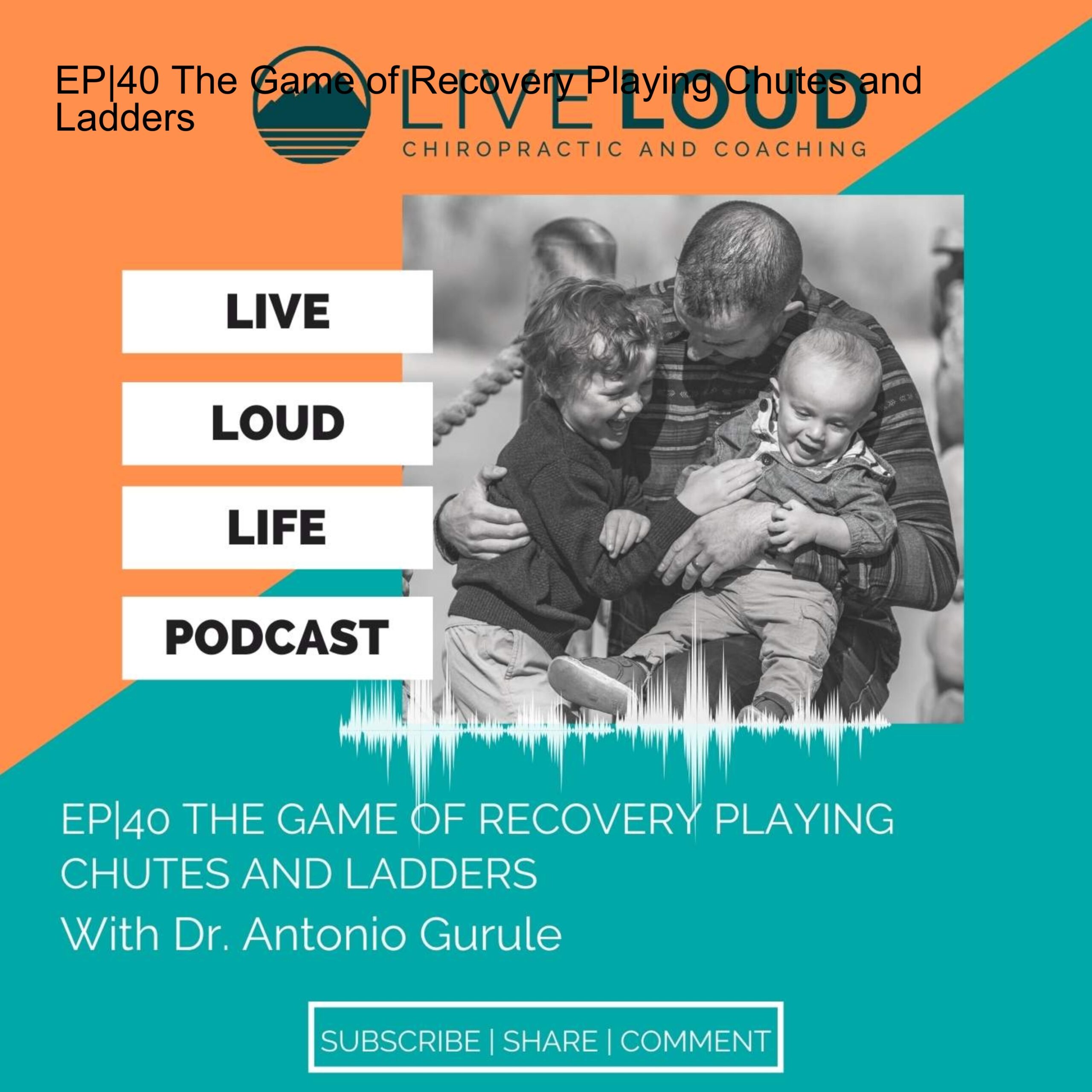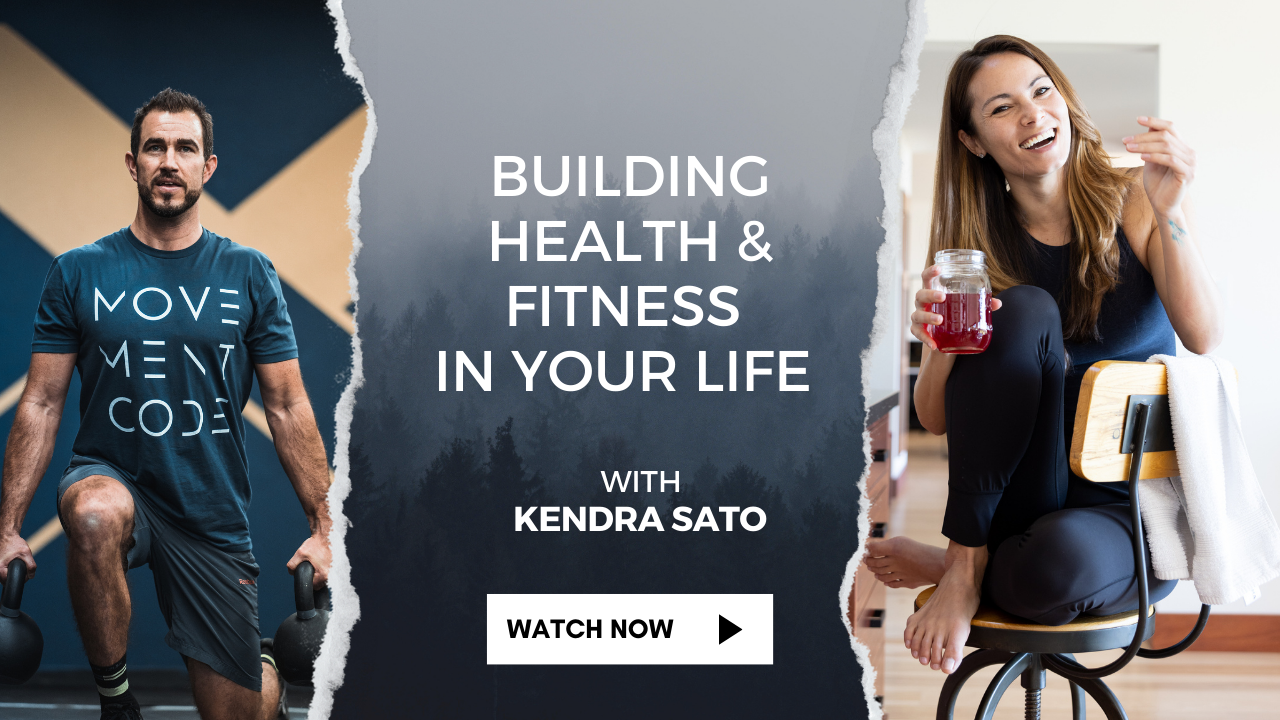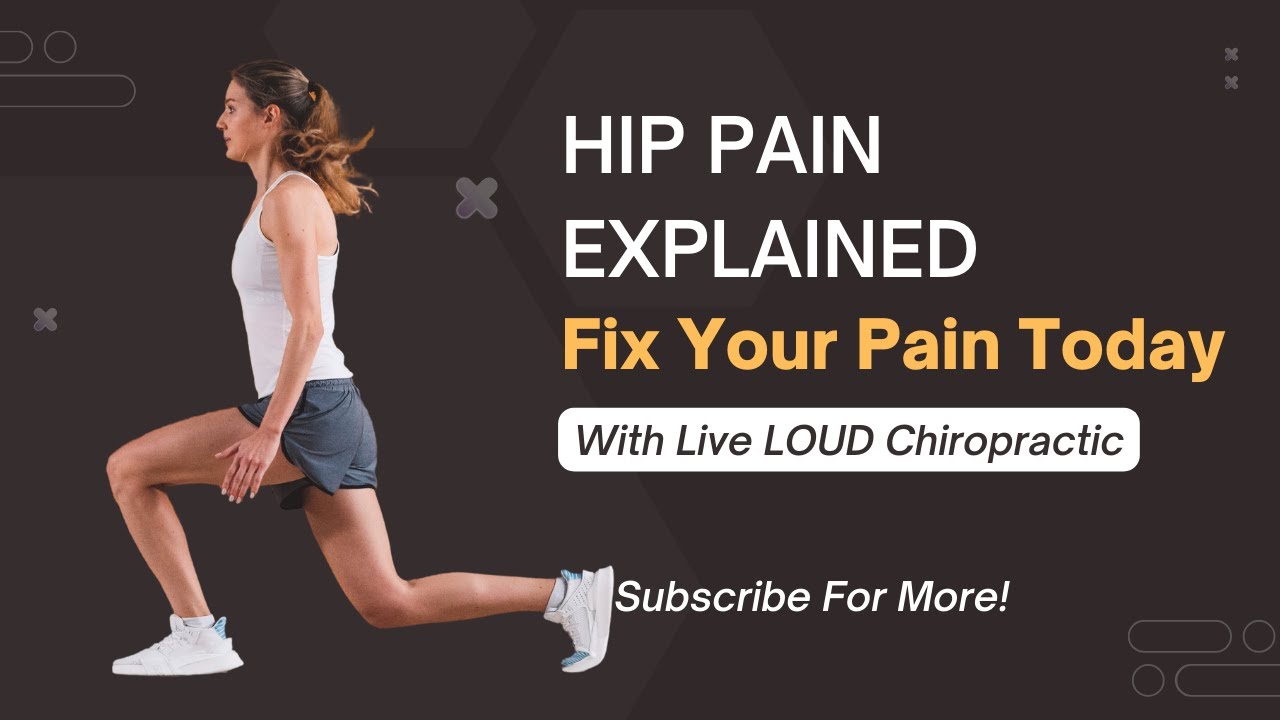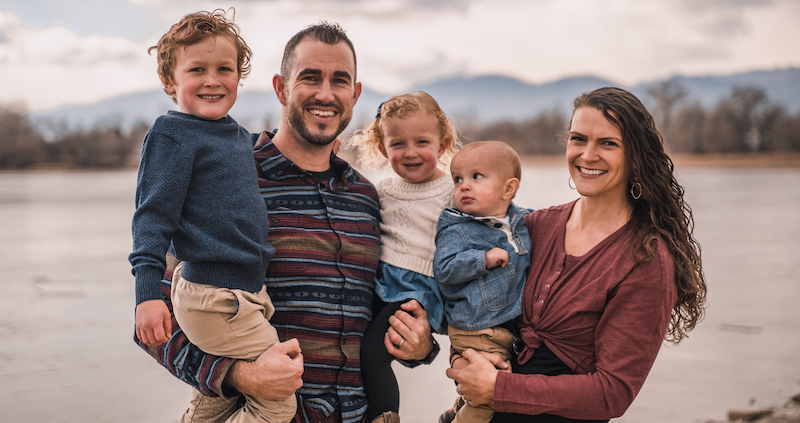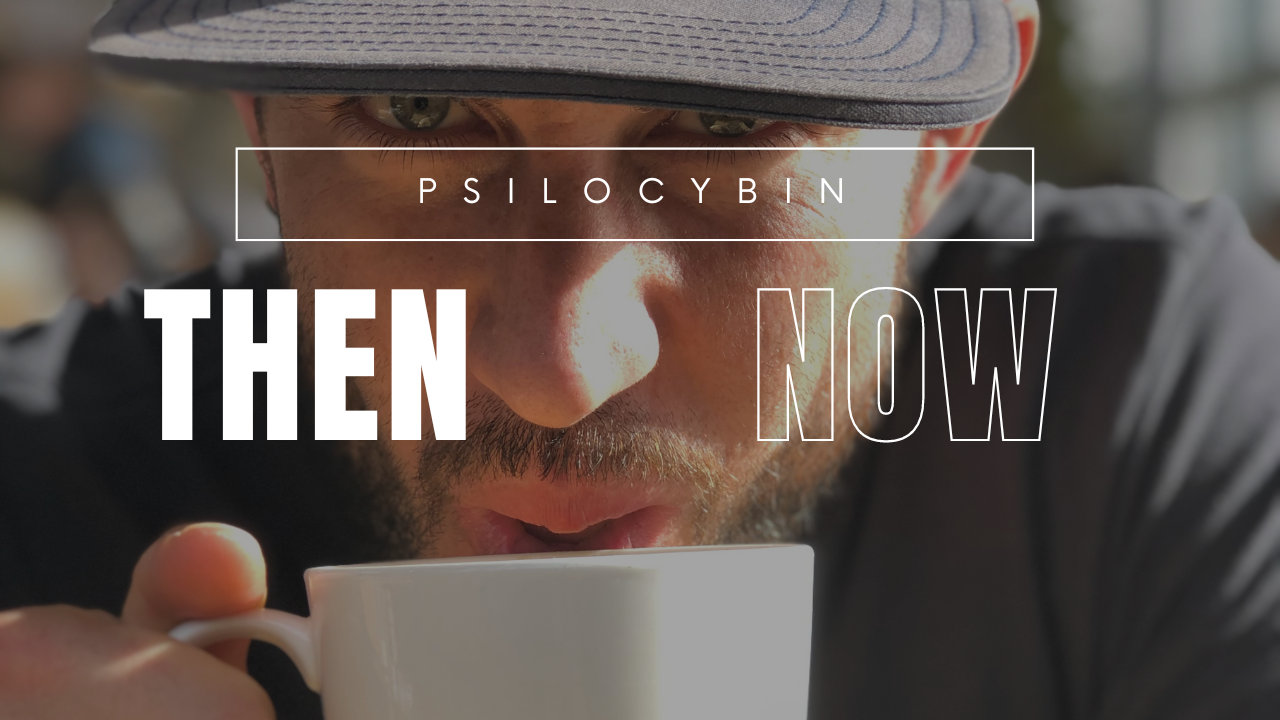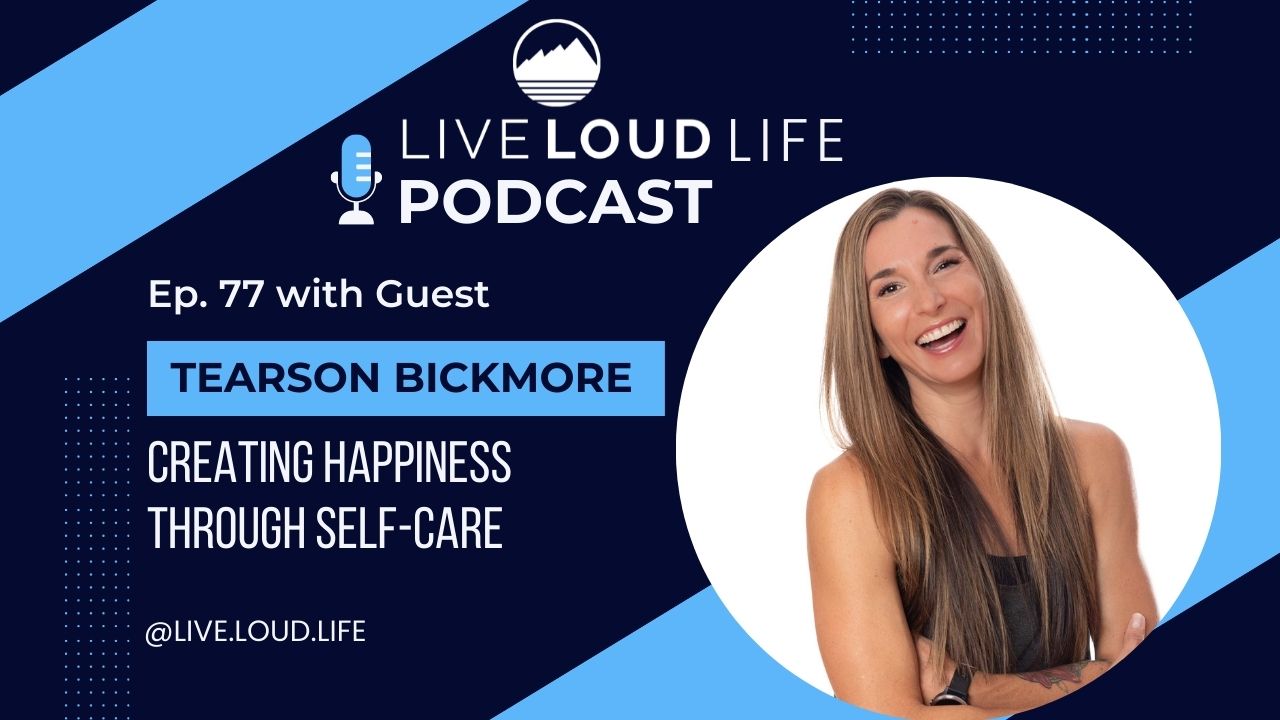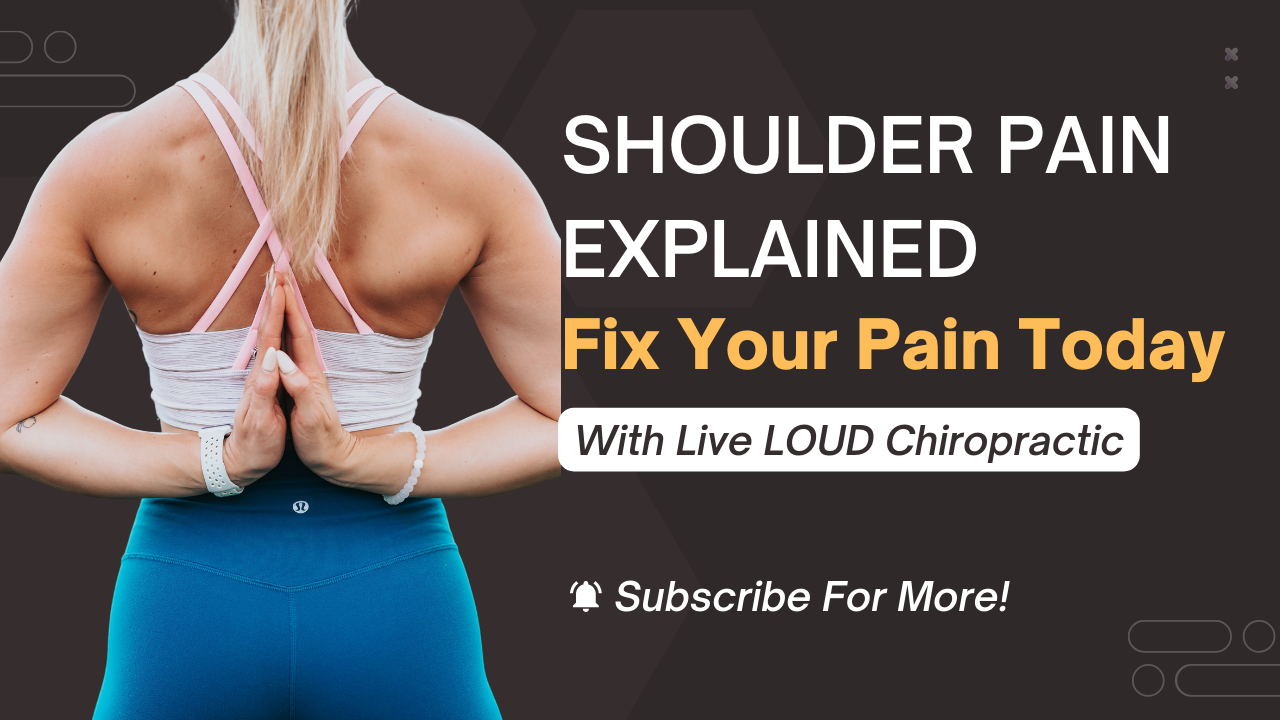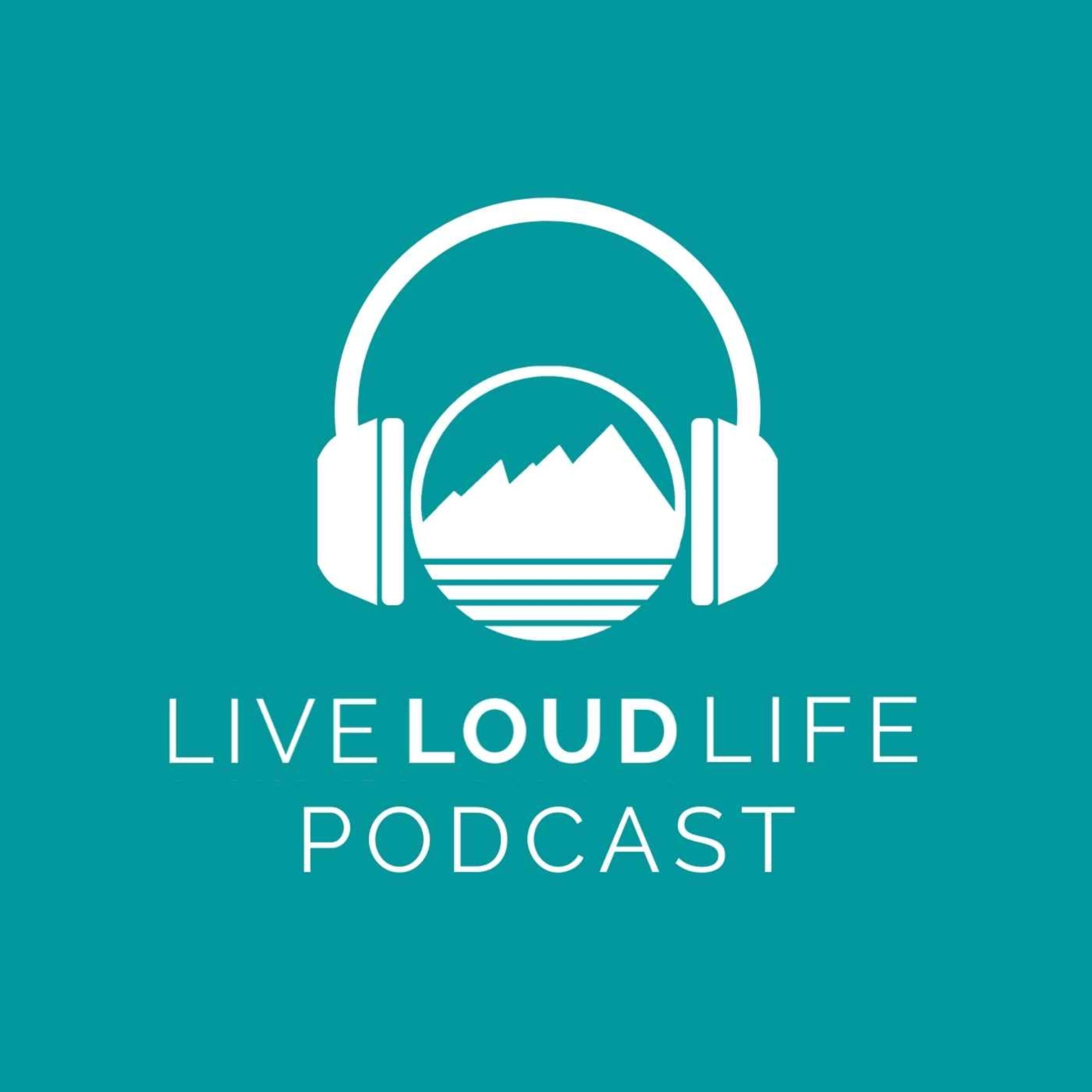Month: September 2022
Rehab Purgatory & Why You Are Not Progressing
Live LOUD Life Podcast
Lafayette Colorado
Episode 79
Rehab Purgatory & Why You Are Not Progressing
With Dr. Antonio Gurule
Rehab Purgatory is the center of today’s discussion on the Live Loud Life Podcast with Dr. Gurule. Rehab Purgatory is when someone gets locked up or stuck in an element of needing to be able to achieve a specific set of goals before being able to work out, train, or return to regular fitness and exercise routines.
In Dr. Gurule’s experience, it is a critical to have a conversation about Rehab Purgatory and overcoming it with many of his injured patient, epsecially those with chronic pain who feel like they’re kind of stuck in this loop of not getting better.
Episode Highlights:
(00:44) Big Announcement, Baby News
(02:34) Rehab Purgatory Basics
(07:32) Root Causes Phrased in Context
(09:48) Neural Drive in Movement Patterns: Post Injury
(11:49) Moving Beyond Rehab Purgatory
About Dr. Antonio Gurule
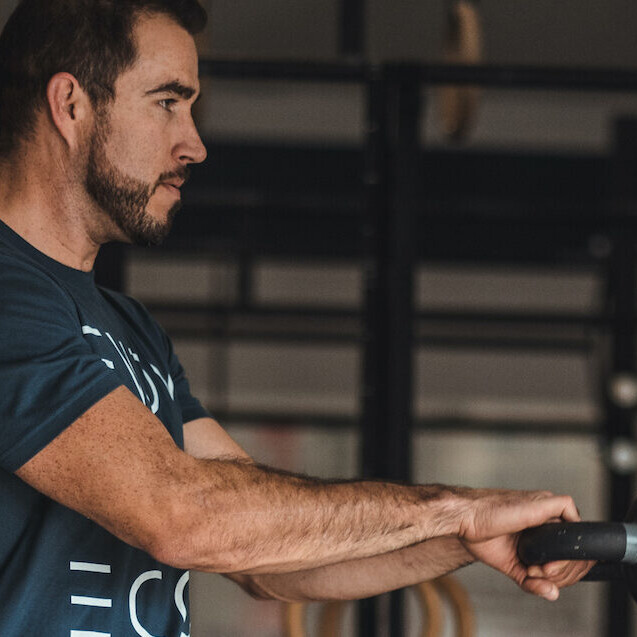
Background:
- Father
- Doctor of Chiropractic
- Owner of Live LOUD
- Personal Trainer & Health Coach
Check Out Some of Our Other Blog Posts and Podcast Episodes
Why You Are Not Advancing | EP 79
[00:00:00] Dr. Antonio Gurule: What’s going on. So, in today’s episode, we’re gonna be talking about, uh, what we refer to as like rehab purgatory. Basically, a lot of us get locked up and stuck in this element of, I need to be able to do X, Y, and Z appropriately before I’m able. To workout train or, or, or, you know, return back to fitness or exercise or some or something like that.
[00:00:22] So this is a, uh, this is a critical conversation that we have a lot with our injured patients, but also even more importantly, with, with chronic pain patients who feel like they’re kind of stuck in this loop of not getting better. So, I hope you enjoy the show.
Big Announcement, Baby News
[00:00:44] Dr. Antonio Gurule: Welcome back guys. Welcome to another episode of the live loud life podcast. My name is Dr. Antonio, your host of the live loud life podcast. Um, Short bit of exciting news. Uh, I’m not sure when these episodes necessarily air, um, I just try to film ’em and, and get ’em out onto seven, any particular schedule, but we’re expecting baby number four, uh, surprise to both of us, uh, still kind of wrapping my head around that we’re are Michelle, my wife and I, we’re gonna be doing some recaps too, of like first trimester recap.
[00:01:15] And then she’s gonna be doing kind of like a weekly vlog that just kind of. Updates on, you know, how pregnancy’s going, what this stage looks like, her nutrition, her supplementations, and things like that. So, so for those of you who are in this phase of life, uh, and you’re curious about that, be sure to check that out, we’ll have a whole different section, uh, within our YouTube page, that’ll be highlighting that.
[00:01:37] And we’ll probably air a few of those episodes here on the live wildlife podcast as well. Uh, and be sure to be sure to subscribe hit the little, uh, bell notification. If you follow, follow us on YouTube, uh, subscribe, whether that’s on. Podcast or wherever you listen to your podcast, uh, to get that information as well.
[00:01:54] And then if you’re not following us on Instagram, uh, our handle is live.dot life. Um, uh, that’s on that’s that’s our Instagram handle. So, we, we post obviously a lot more short form content there, but you can, you. Get a little bit more of that because our podcast episodes, the narrative that we’re describing is less demonstrative purposes, right.
[00:02:15] Uh, you’re hearing to me talk more theoretical concepts on and so forth, but if you’re interested in seeing some movement breakdowns or getting some Kele ideas, we’ve been dropping that, uh, more recently, some Kele complexes, be sure to get that on YouTube and Instagram, because that’s where that information is going to be.
[00:02:33] Enough of the housekeeping.
Rehab Purgatory Basics
[00:02:34] Dr. Antonio Gurule: So, rehab purgatory, um, as, as described in that intro there, what happens commonly is. Everyone’s marketing and advertising is around getting to the root cause. And that is important. And we talk about that as well, but sometimes we see that taken too far and providers and practitioners, or even individuals feel it is they’re responsible to understand what all the tiny little nuances and underlying.
[00:03:09] Potential triggers or cause that might be there in order to quote unquote, fully heal and make yourself able and ready to return. Now, this is a very, very broad concept. Um, and, and, and topic, because while I am, while I’m saying this, I am not negating or downplaying the, the importance of understanding.
[00:03:32] Baseline movement principles or certain restrictions or weaknesses within the body that obviously are attributing to. To a, to, to pain, to, to your recovery, so on and so forth. But I do find that, and we’re, we, we treat gen population, right? While we do have athletes that we work with, uh, this narrative and conversation changes a little bit, but even more importantly, with athletes, they’re trying to get right back into their, their field to play as quick as possible.
[00:04:03] And. For, for the majority of us who are following along and paying attention after an injury, after you get injured, there is a, there is a period of obviously recovery, right? And, uh, there’s, there’s, there’s, there’s certain elements that we need to be able to hit and do during that recovery process. Now, when we’re returning.
[00:04:25] We see from PTs massage, chiropractors, personal trainers, anyone who’s kind of involved in this quote unquote rehab, um, world or rehab, uh, profession, is we wanna give exercises that help stairstep you into the next level. But. The foundation of progressive, meaning you are progressing is progress, right?
[00:04:51] You need to be able to show progress in order for us to feel like we’re actually going anywhere. And this was, this was sparked by two of our more recent patients who were stuck in this element of. I, I don’t feel ready, or I cannot do something until I loosen up and I stretch, and I work on these imbalances or these weaknesses within my body.
[00:05:14] And we, we just, you know, we encourage the question of like, well, what do you think would happen if you started working out or training and you did not have those elements completely, uh, fixed or dealt with. And. Essentially the conclusion came to well, I, it wouldn’t change all that much. Um, uh, you know, some were worried of running the risk of potentially re-injury again, but, but, but going through the assessment and the orthopedic evaluation and, and highlighting that the likelihood and, and through the assessment process, we don’t think anything’s actually broken or damaged the likelihood of you re-injury or doing something bad because your imbalances or your weaknesses or your tightness, your tightness is not fixed.
[00:05:53] It’s pretty low. Right? So, what we try to encourage is just trying to gain some momentum, right? When you’re an acute injury, sometimes we have to slow people down, but there’s still a lot that you can do early on in your acute phase of maintaining the progress that you had, maintaining mobility strength in other areas of your body, while that healing process go is going on.
[00:06:15] But more importantly, this is for these chronic patients who have had. Issues realistically more than three months, but we’re looking at six a year or even two years down the road and they just get stuck. It’s just like, my body feels off. It feels tight and I need to stretch all the time and I need to do this or this, but I’m not working out cuz I don’t.
[00:06:37] I, I, I’m just not ready to do that. And, and so we need to encourage them and, and show them, prove to them that their body is in fact, ready.
[00:06:45] Now you’re gonna be sore because you haven’t been working on a training. You can’t downplay that, but, but laying out that conversation, the narrative of just the expectations of like, you will be sore, but that’s different than what you’re experiencing.
[00:06:57] Now. That is a good thing. That means we’re actually working and training muscles and joints and tendons, uh, and tissue so on and so forth. So. If you are finding that you’re stuck in this, this, this loop of, you know, I’m doing all the right things. I’m just not getting anywhere. Or I feel that I’m always having to stretch in order to feel better, to feel looser, or I feel like I always have to activate my glutes are activate my lats or activate a certain muscle group in order to be ready to go.
Root Causes Phrased in Context
[00:07:32] Dr. Antonio Gurule: I think you need to start. Asking different questions and, and figuring out how to just, you know, skip ahead a little bit and see how things go. And the reference that we, we will commonly use is context. Right? All of those things are important. The activations, the stretching, you know, opening up whatever we want to call.
[00:07:55] Are things that we discuss and the things that we, we definitely use, there are certain limitations, quote, unquote root causes that are the reason why we’re not able to progress or deal with a chronic injury or something like that. Right. But unless you phrase it with some context, uh, your body’s not gonna know what to do with it.
[00:08:16] Right? So, uh, just this morning we had a new patient who was talking about firing his, firing his glutes, right? He’s worked with PTs personal trainers, a number of different people where he’s just had this issue where he is not been able to fire his glutes. And he’s just wrapped up in this idea that he cannot do squats and other big quote unquote movements, unless he’s able to fire his glutes.
[00:08:38] And so, you know, the, the first question was, well, how do you even know if your glutes are firing? And simply was, it was well, they get sore. Well, soreness goes beyond activation and firing, right. Soreness means you’re actually working ’em out. So that movement you’re doing is still good. But if you’re just doing that without any progress, you’re not able to create more context for your body that allows it to understand how the movement principles are applied and how you start connecting the dots to be able to hike longer.
[00:09:11] Be stronger in a sport to be able to lift more weights, to feel more able bodied with, you know, yard worker projects around the house. So we use this phrase of context commonly because it helps create a better narrative between how your body operates. Again, all the majority of what we’re really talking about doing is we are making physiological changes by loading.
[00:09:36] Excuse me. By loading the tendons, the muscles, so on and so forth, they will get stronger. They will become more robust. Um, they will, they will become more resilient. That is true. But
Neural Drive in Movement Patterns: Post Injury
[00:09:48] Dr. Antonio Gurule: when we’re talking about recovering from injuries, acute or chronic, a lot of the conversation is, is working on the neural drive in the movement patterns that help you.
[00:10:01] Move again after injury, create confidence after injury, so on and so forth. Cuz we, it is, it has been well documented and showed that we do have decreased muscle activation after an injury. Why? Because your, your body doesn’t want you to injure it again. It suppresses that. And so part of this is, is, is creating movement opportunities or opportunities in which you move that your body can then reintegrate and figure out those pathways again.
[00:10:27] And the more you do that in the different ways that you do that provides a wider range of content, which makes you more able bodied.
Specific Adaptations to Imposed Demands
[00:10:34] Dr. Antonio Gurule: So that’s why the, the said principles, specific adaptations to imposed demands, um, can be a benefit and sometimes a detriment, right? Because that’s that says through specificity, we get better when we do specific things.
[00:10:49] Right? So, if I which the, I have this conversation. Quite often through my biased, likes and wants. I primarily do kettlebell work, right. So I have become very efficient and good at doing kettlebell workouts. Now I can progress it to make it harder for me so that I continue to get stronger. Uh, I try to mix in other elements of kettlebell work that I don’t normally do so I can get some more variety, but my body has become efficient.
[00:11:17] And, and created specific demands, uh, specific adapt adaptations to those imposed demands. Now it helps me, I would have some good carryover to other movements such as barbell and different things like that. But if all I did was ever that and never other things, I, I would lose the ability to lift the barbell well or to do cer certain gymnastic movements or certain body weight movements, because I’m only doing one thing.
Moving Beyond Rehab Purgatory
[00:11:49] Dr. Antonio Gurule: So, this is, this is what happens with the Rehab Purgatory is you get really good at doing glute bridges. You get really good at glued activations, but you can’t do anything more. Your body. Tapped out. So then when you try to return back to fitness, you feel, you feel weak, you feel, um, like your body’s not able to actually do more than, than that.
[00:12:11] And that’s the issue at hand is we just get wrapped up in this. I need to stretch. I need to activate; I need to wait. I need to do this before we actually challenge the body to do. The things that the body needs to do now, what would that be? Well, it depends on the person, right? That’s why you have to have a conversation about your goals and your expectations of what things you actually run, wanna run into, or wanna return to, sorry.
[00:12:34] And, and, and what we always refer back to is, well, so that’s, that’s exactly what we need to do. I have a postpartum patient who wants to return back to running. Is that okay? Have we tried it yet? No. Okay. Well, you need to try it so we can get an idea of where we actually stand. Now we don’t say go run a 5k walk, run, walk, run.
[00:12:51] So on and so forth. Same individual or different individual. Hey, I wanna get back to dead. Great. We’ve built up the foundation of understanding how to activate or how to brace your core, how to hinge, how to do certain things. You have the green light to do it. Nothing’s broken. Nothing’s wrong. Do it, get feedback, come back, give me that context so that we can help reframe re-pattern, reposition, or do whatever we need to do to change it.
[00:13:15] Or you might literally feel, I felt great. Good. Go with it. That’s that’s what we’re looking for is to get that, that, that green light of just. It’s it’s. It’s all good.
Moving to the Next Level when You are Ready
[00:13:26] Dr. Antonio Gurule: So, don’t let yourself be held back just because someone told you you’re not ready. If you feel like you’re ready, you need to start pushing the envelope.
[00:13:35] If you’re getting frustrated, that probably means you’re ready to go to that next level. Um, now I will sidebar. Make a side note, some of you are frustrated cuz you got injured and you can’t rush physiology as far as healing. But again, there are a, a, um, there are many things that you can still do while you are recovering from an injury that allows you to maintain the momentum that you had from working out before.
[00:13:56] Right. So, it’s not just sit and wait and then get sucked back into that loop. Um, So I hope that helps some of you more specifically, this is a little bit more tailored to those that have chronic pain. Who’s just been like, you know, I wanna get back. I’m not sure I’m not ready. I feel like I need to do this, this and this before.
[00:14:13] I know nothing’s wrong, but you know, I, I, I don’t know. Something’s telling you, you need to hold back for whatever reason. And part of it just is a lack of confidence. I can, I completely agree with that. I’m not trying to downplay and say, you’re not doing enough. You’re not pushing yourself. All I’m asking you to do is to try.
[00:14:33] Doesn’t mean, go be dumb about it. Just try it. Then you’ll get some information. You’ll create more context to help your body understand where you actually are at. And then, you know, here’s my starting point or here’s where I’m at right now. I wanna be here. I gotta bridge that gap somehow. And that’s setting up a program.
[00:14:52] That’s understanding movement patterns, that’s understanding lifting, uh, but it doesn’t have to be. That complex. Uh, we’ll, we’ll do another episode here um, coming up, talking about kind of, uh, it’s an integration on my health journey, but why I love kettlebells and just some of the programming that I do now, I will be biased and say, I do have gaps and holes in this programming, but this is kind of a season of life.
[00:15:13] This is where I’m at. And it allows me to get the majority of what I want and what I need out. Training, um, when it’s set up this way. So, if you’re interested in that, uh, be sure to check out the upcoming episodes to get that story. Um, that’s all I got for you guys today. Hopefully that was helpful. Again.
[00:15:30] Uh, one last word of advice is reach out for help. If you feel like you’re stuck, that’s the whole reason why there’s professions like ours. We’re, this is what we’re, this is what we’re good at. We’re good at helping you find the holes, find the gaps, understanding where you are to where you wanna be able to be to, to set up a plan for that.
[00:15:48] And sometimes just to, just to, just to navigate. A conversation with you to say, no, you’re good. You can do this. Right. Uh, sometimes people just want the blessing to be able to move forward. Uh, and, and that gives them all the confidence in the world. So, if, if that’s you and you’re having hesitation, you know where to find this, you can reach out to us, uh, www.live loud, life.com.
[00:16:11] Hello. At live loud life.com is our email. Um, you can call our office (303) 717-6323. Uh, we do virtual Consults as well. So, if you’re, if you’re not local and you want some help, um, again, we just have a conversation like this. I get to know your injury, your chronic injuries, where you are now, what you’re doing, what you wanna be able to do.
[00:16:33] And even if I’m not able to provide hands on care, I promise you that we’ll be able to help set you up with the. Moving forward. Thanks for tuning in guys. Live loud.
–
Fix your Neck Pain Today | Neck Pain Recovery Explained
Fix your Neck Pain Today | Neck Pain Recovery Explained
Are you currently suffering from neck pain?
Neck pain that might be acute, meaning to just happen recently, within the last few days or weeks? Or a chronic condition that you’ve been dealing with on and off for the last few months, if not even years?
Oftentimes, we hear people come into our office here at Live Loud Chiropractic in Lafayette, CO and just say, “oh, I have a bad neck. I have disc degeneration of degeneration of the spine. And that’s the reason why I have neck pain.”
Although neck pain might seem common, it is not uncommon for this condition to be mismanaged. Oftentimes, our patients are being put through the wringer whether that’s with massage, Acupuncture, PT, Chiropractic care, primary care, shots, or orthopedics, without the proper understanding of why the pain is even there in the first place.
PLAY VIDEO ⬇︎
If you’re dealing with neck pain, this blog is for you.
If you have a family member who has been dealing with either chronic or acute neck pain, and they’re looking for some support, please share this with them.
What will you get in this blog?
- break down the common causes of neck pain
- give you the Live Loud approach to handling neck pain and musculoskeletal conditions.
- A few of the tests we use to determine what the cause of pain is.
- Some things that you can do about the neck pain, right when you’re done reading this blog.
- A long-term approach to helping with neck pain
- The platform and the philosophy about how a movement-based approach really helps you as an individual deal with any sort of aches and pains that you might be having.
Overuse and Neck Pain
A lot of the issues that you’re going to be seeing with neck pain are overuse in nature, but it’s, almost from a stagnation perspective.
Your head weighs 12 to 20 pounds, and based on our somewhat sedentary lifestyle for Western civilization it puts a lot of tension on the back side of your neck. Thus, those muscles are constantly having to contract and hold crazy tension and tightness. Then we create this negative feedback loop.
Rule out any Structural Issues with your Neck Pain
What we’re going to first and foremost is make sure we rule out any sort of structural issues. Again, outside of you having trauma, an accident, etc the likelihood of this being the case goes down.
What we will have you do is:
- sit up nice and tall, and we just basically push down on the head.
- What we’re doing here is seeing if there’s any pain or trigger of symptoms.
- After that we’re going go to the side, and then to the other side.
One thing to consider, though, is, in the case of neck pain, if you’re having any sort of ridiculer symptoms, meaning you have numbness, tingling, or maybe pain down the arms, this is what we’re trying to look for. Maybe there is a disc issue or some sort of encroachment on a pinched nerve at the actual spinal level.
If those do not replicate then we’re going to be looking at the soft tissue structures within the super clavicular area. Which is right in the soft part of your neck where all the nerves come out of, but that’s what we’re trying to look at.
Basic Range of Motion with your Neck Pain
Now we’re going to look at basic range of motion:
- Tuck your chin down to your sternum.
- Look all the way up
- Back down,
- Look over your right shoulder
- Then look over your left shoulder
So active range of motion is good, we would assess passive range of motion as well to determine if there’s any sort of issues. For some people, they get neck pain when they’re working out – this means that there might be a technique flaw that we would have to address.
Commonly, we see this with overhead pressing, where someone is driving their neck through, essentially just creating a pinch point in their neck.
Range of Motion and Mobility in the Thoracic Spine & Neck Pain
The other thing that we have to look at is where does your head attach to the upper part of your back?
We have to address what the range of motion and mobility within the thoracic spine is to determine if that is affecting where the position of the head is. For this we will do a cat cow exercise.
With the cat cow exercise, we’re going to be looking for extension. In doing this we get a lot of spinal motion. To segment off where we want the mid back, you’ll come back to neutral, sit your butt back down through your heels, and do the same cat cow motion.
This way we can isolate more of the thoracic spine and see if there’s any sort of limitations. Commonly we’re seeing an extension limitation, meaning more rounded forward. When we’re rounded forward that’s going to put your head forward putting more pressure on your neck or that CT junction or where your neck meets your upper back.
Is Your Neck Pain coming from a Neighboring Area?
This is an important distinction of understanding. Is the neck issue actually coming from a different neighboring area? Or is it just from stagnation and not moving a lot?
Next, what we’re going to do is have you lay on your back face up. From a manual therapy side, we know there’s a ton of benefit from doing soft tissue work. Soft tissue work is something we at Live Loud like to pass off to you to do at home. This allows you to become autonomous in your care and address the tension that you might be feeling in between our sessions.
We’re going to be doing essentially just basic, pull and stretch motion to help work on any tight spots. This also helps me palpate to determine what areas we need to focus on more. Obviously, you as an individual will be able to feel where you’re tighter in certain areas, and are more tender, and you’ll want to focus on those. We’re just going to work all these different spots within this session, especially the suboccipital.
The Suboccipital and how important it is in affecting your Neck Pain!
The suboccipital is underneath your occiput, which is the base of your skull on the back. Why are these so important?
Well, many of us are doing some form of computer work nowadays, or on our cell phones, reading, whatever that is. These are directly tied to eye righting reflexes and leveling of the head.
So, if I am rounded, I’m going to have to tip my head up to be able to see level to the horizon. Oftentimes, these get extra tight. We’re going to do an extensive amount of work here with fingers, and or maybe dry needling to help relieve the tension here to open up range of motion.
What you can do at home for Neck Pain
Now, these can also be worked on at home. All you need are some trigger point balls and a yoga block. Trigger point balls are two balls that are basically together that are softer than a lacrosse ball and firmer than a tennis ball. These are going to basically cup and hug the suboccipital muscles.
You can take this exact same tool at home, to work on the tension in between our sessions, during your micro breaks, while you’re working on the computer or at work or whatever that might be.
Once you have trigger point balls and a yoga block you can set the balls on the yoga block and lay down placing them where they are cupping your suboccipital.
Once you do that you can start to turn your head side to side, up and down, and draw different shapes to hit different angles and corners to make sure you’re getting all the areas that you can.
Important note when you establish range of motion with Neck Pain
A couple important things to note, this goes true for any part of your body, once you’ve established more range of motion or decreased pain, you have to put that into context, you have to show the body that the pain that you previously had has improved, or that your range of motion has. One of the movements that I love, especially for the neck is called:
movement mapping for neck pain
What we want to assume is that we have this, imagine a space globe around your head, right, and you have a marker or something on the top of your head. Now, your goal is to cover the inside of the globe as best as you can.
So, you’re basically going to try to paint the inside of a globe and go through all of these different ranges of motion. Now the reason why we call it mapping is you’re going to have a better understanding about where your tight points are. Where maybe we’re getting some kinks in the system as well.
But more importantly, all the range of motion that we’ve been improving through adjustments and soft tissue work, you now can translate into better and more movement.
If you have questions about what this looks like take a look at the video!
Expand with Resistance Training
We would expand upon this too, with some sort of resistance training, whether that would be a plank, or even like a bird dog and something where you would have to stabilize and hold your neck and teach it what we want for range of motion and stability.
These are a few important tools that will help you handle your pain throughout the day, if it’s something that’s kind of chronic and or ebbs and flows based on how much you’re either at a computer, or how much you’re driving and commuting, all of which have the effects on how much load or pressure is going on to the neck.
But again, it also creates a frame of reference in context as to how you can improve your range of motion and gain more confidence with your neck rather than just staying stiff and turning your whole body when your necks hurting. If you continue to do that then your neck is just going to get tighter and tighter and build upon itself.
Test it out on your own to Help your Neck Pain!
If this was helpful, this would be a fantastic thing to at least test out on your own. What we’re really looking for as far as this movement mapping principle, right, is it not only helps you take away a lot of the pain and discomfort because again stagnation just makes you tighter.
We want to break up stagnation with movement, that simple. But as you improve range of motion, whether through adjustments, trigger point work at home, or in the office here at Live Loud Chiropractic. We have to create more context, if you don’t use the new range of motion that we’ve just established, then you’re just going to stay tighter, right?
You have to teach the body what you want it to do, as far as from a functionality point and just simply range motion, but also stability.
We here at Live Loud Chiropractic encourage you to take the exploration model that is by far the foundation of every part of my conversation, whether it’s neck pain, knee pain or shoulder pain as it helps you better understand where your sticky parts are, where you’re tight, and where it’s painful.
This way you have a better idea of what to avoid or what to what to dive in a little bit deeper on to see if you can improve it. This also creates a better context for me to have a conversation for you.
Final Thoughts on Neck Pain!
Whether you have a potentially chronic issue or something more acute where maybe you just woke up with neck pain and you feel like you can’t move.
We here at Live Loud Chiropractic in Lafayette, CO are always here to help and support you and your pains. Having more context around your neck pain will help determine what the best course of action for you is to help you get back to all the activities that you want to be able to do and live a loud life.
How to Train & Reduce Pain When Traveling | EP 78
Live LOUD Life Podcast
Lafayette Colorado
Episode 78
How to Train & Reduce Pain When Traveling
With Dr. Antonio Gurule
For many, work and travel is a big part of your lives. You’re on the go, you’re busy, traveling, you’re in a different city, you’re not sleeping in your bed, and this routine is tough on the body. There’s a lot of aches and pains that can come about which are associated with travel. Additionally, It’s tough to stay consistent with your routine of working out, training, consistent diet and eating properly. In this episode, what we’re covering are a couple tips to help you better cope with the chaos due to having active lifestyle, and extensive travel.
EPISODE HIGHLIGHTS:
(00:00) Intro to Traveling and Reducing Pain
(01:23) Dr. Antionio Gurule : Coaching you to understand your body
(03:52) Pain & Tightness from Workout Crutches
(07:54) Fundamentals of How Your Body Feels, Works, & Operates
(11:04) ISO Metric Movements & Injury Recovery
(15:17) The End Game is Function
About Dr. Antonio Gurule

Background:
- Father
- Doctor of Chiropractic
- Owner of Live LOUD
- Personal Trainer & Health Coach
Check Out Some of Our Other Blog Posts and Podcast Episodes
Ep. 78 | How to Train & Reduce Pain While Traveling
[00:00:00] Intro to Traveling and Reducing Pain
[00:00:00] Dr. Gurule:
All right. So for many of us work and travel is a big part of a, uh, for, for many of your lives, right? Um, you’re on the go, you’re busy. Uh, you’re traveling, you’re in a different city. You’re not sleeping in your bed. And this routine is tough on the body. There’s a lot of aches and pains that, uh, can come about this in, are associated with travel and, and, and there’s a part two.
[00:00:23] It’s it’s tough to be. It’s tough to stay consistent with your routine of working out and training and diet and eating. And so what we’re gonna talk about today is a couple just tips to help you, um, better get through that active lifestyle of traveling a lot. Uh, everyone’s life is different. I have a buddy who travels sometimes four or five days a week, uh, where others are doing longer trips.
[00:00:45] Um, because they’re, you know, they’re doing seminars and different things like that, but. What we wanted to highlight at least was the principles of helping reduce aches and pains when traveling and also how to just stay consistent. And, and the consistency standpoint has, is a, has a sidebar of how to work out with.
[00:01:08] You know, maybe not the same equipment or minimal equipment. Okay. So that’s kinda the avenue of where we’re going.
[00:01:21] This is the live loud life podcast.
[00:01:23] Key Point #2 : Dr. Antionio Gurule : Coaching you to understand your body
[00:01:23] Dr. Gurule: My name is Antonio, your host of the live loud life podcast. Um, and our aim is to help guide you to the adventurous life you’re built for. We do that through obviously our hands through chiropractic care. Um, but more importantly, through a framework. And a foundation of coaching and understanding how the human body works and what you can do to best prepare.
[00:01:42] Right. Um, and, and, and so our, our conversation starts with that, right? Knowing your body and knowing your body, this, this is the foundation that answers both of the questions in the topics that we’re concerned about. Now, when you’re traveling many times. You’re, you know, you’re just sitting in the car to, and from the airport, you’re sitting on the airplane, you’re sitting in meetings and you’re just stagnant.
[00:02:10] Now, a lot of us have stagnant lives here, but the element of travel adds on another whole layer to this right. You’re not sleeping in your same bed. Um, you’re not, you’re not driving your same car. You know, all these things basically affect how our body recovers and how you just operate. Now, that being said, as a sidebar to that, there’s an argument to be made about how much of this preparatory foundation you have so that when life gets thrown off, Does that deviate you?
[00:02:41] Right? Uh, I was listening to this other podcast today where, um, uh, Alex Ori, HERI, um, Basey was talking about crutches, right? And, uh, how these crutches in our lives, we become dependent on them. And these dependencies, when, when things change all of a sudden, your dependencies. And you don’t have those dependencies that completely knock you off your rails.
[00:03:09] Right? So for some people they need, um, you know, uh, aids to help them go to sleep, whether that’s, uh, you know, alcohol or CBDs or, or smoking or something like that. Right. And that was the example he used. That’s just one example. Right. And so. You don’t have as solid of a foundation as you think, because you’re dependent on certain things in order to get through life.
[00:03:32] And his argument would even be coffee, right? Um, people were able to live their lives and fully function without coffee before. But yet we, we say, I need this, or I am this without this type of thing. And that’s a crush crutch. It, I dependency. So when you’re traveling for many people, it basically derails what their life was.
[00:03:52] Key Point #3 : Pain and Tightness from Workout Crutches
[00:03:52] Dr. Gurule: And because they don’t have this solid foundation and they have a lot of crutches that they are dependent on. It completely throws everything for a loop. And then your body responds oftentimes with pain and tightness. So from a, from a physiological baseline perspective, what we have to understand is movement is going to, and will always be your best friend, right?
[00:04:11] Moving your way through pain, moving your body so that you can prevent pain. Maintain healthy joints, lubrication, so on and so forth. That is the key when you’re traveling right, is setting up and knowing again, as a sidebar, knowing your body and what areas are maybe quote, unquote, more vulnerable due to previous injuries.
[00:04:33] Um, other areas that just need a little bit more time and attention because you have traveled so much and you know, the problem areas I E lower back, tight knees, tight. Cramped in tiny little, um, airplane seats. Those are the things that you have to preemptively tackle and know, rather than just sitting and looking at your phone while you’re waiting on the computer, you might be doing some mobility exercises off in the corner, in your seat, right?
[00:04:56] So the best fix for understanding a painful, lower back or different things, or just different areas is you have to preemptively. Start moving and create this buffer system that helps. And then in between, and break it up. Now, for many of you, you might be thinking, well, not everyone has to do that. Why don’t I have to do it?
[00:05:15] It’s it’s just how it is, right? Not everyone. Uh, not, not everyone has to lift as much weight in order to get a physiological response to maybe you or, or some people just tend to put on more muscle and they don’t have to live as much. It’s just, it’s just what it is. Right. You can’t make excuses of like, well, why me and not them.
[00:05:32] It’s just what it is. You either can deal with it or you can. Not deal with it. Right. And most of us would argue that dealing with it would be better than just complaining. So you have to just know what that is now. Again, this is the argument of knowing your own body, too many of us. Don’t actually take the time to understand where our.
[00:05:53] Our kinks are, are, are these tight spots or these quote unquote underlying problem areas because we don’t wanna take the time to jail. And I’m guilty as that. I know I have gaps and holes in my training. Um, and so that’s not a perfect system by any means. Um, but there is an element of this exploration model of, again, understanding to knowing your body and also like what, how it responds.
[00:06:16] And Michelle and I, uh, were just talking about this the other day, because. Through, we are rewarded with this, this kind of click bait mentality for things. Right. And I saw this, um, I don’t even know how, or when this would be important, but I was on YouTube, looking up some exercises to prescribe to someone that I didn’t have a video for.
[00:06:39] And. Someone had a video that talked about how to stretch your Sartorious muscle. Now, for most of you, you’re gonna be like, what the hell is that your Sartorious muscle is this very, very thin muscle that runs from the, the front of your pelvis, kind of near your hip. And it kinda wraps down and across your thigh to your inner knee.
[00:06:58] And I, I, I, I, I can’t, you can’t, you can’t even isolate that, but yet it’s one of those things that from someone’s like, oh yeah, that’s a super important muscle. I, I would need to do that, but. It comes back down to movement exploration and understanding like, well, when I move my hip in this way, it feels tighter kinky.
[00:07:17] Okay. Well, I’m gonna try to see if I can help unlock it and move it. Or I’m gonna do a little bit of fascial work or a little bit of soft tissue work or a little bit of something to gimme a response that helps loosen it up and then I’m gonna train it and move it some more. But we want this, Hey, this hurts do this one thing and it’ll fix it.
[00:07:32] Now we’re guilty of creating those because again, we need clicks and we need likes and we need shares so that we can get more and more information out to you. But we, we, we, we wrap it up in that pretty bow, but hopefully the narrative of what we’re saying makes more sense than just, Hey, do this and see if it helps help you.
[00:07:49] Right. Um, top three exercises, those types of things.
[00:07:54] Key Point #4 : Fundamentals of How Your Body Feels, Works, & Operates
[00:07:54] Dr. Gurule: It’s having the basic fundamental understanding of how your body feels works and operates. And that is the key to helping you reduce pain, eliminate pain, uh, prevent pain, and maximize, uh, how your body can operate. Now with that is okay. Well, how do you work out and train?
[00:08:16] Well, here’s the thing. When you sometimes have a crutch such as my workouts revolve around X, Y, and Z, oftentimes this could be like, well, I do CrossFit. Well, when I’m traveling, I might not have access to a CrossFit gym, so shit, what do I do? Right. Um, I need, I need. Equipment in order for me to have a good workout crutch, right?
[00:08:40] That’s a crutch. And, and if you, if, and if you, if you don’t have that ability to fulfill what you need, then it is going, shit’s gonna hit the fan. But if you have. A better basic understanding about again, how your body moves and operates. You can easily find and get creative with, with ways to, to, to get a workout and, and, and train, uh, with just your own body weight.
[00:09:07] It could be incline pushups. It could be using chairs for a dip. It could be running, it could be walking, it could be walking lunges, right? There are so many things that we have the ability to do, uh, that we just, again, Get pigeonhole and narrow down into these crutches, assuming that I can only do, or I can only get something out of this if I have X, Y, and Z.
[00:09:29] So when you’re, when you’re traveling and you do not have equipment, you have your body weight. And for most of us, our body weight is very sufficient for getting us. An appropriate workout. I would argue that no one would say my body weight is too light and I can’t get a sufficient workout. Um, uh, even even bodybuilders who might be extremely lean, they’re familiar with calisthenics and know how to obviously then work their muscles and body in a certain way.
[00:10:00] Uh, now what are some of the ways you can do it? Well, you’ll probably, you might need more repetitions because your body weight might be relatively lighter. What you’re doing in the gym now, as a, as an opposite side of that, your body weight might be too heavy for some of these things. For instance, if someone is not strong enough to do a pushup, well, pushups, aren’t really the best option.
[00:10:23] So bench press would be better for them because the, their strength. Related to how much they weigh is a little bit too heavy in the, in, in dumbbells or something like that would help load them appropriately. But we can reduce our relative body weight in order to achieve pushups by doing incline pushups, you could do this on the wall.
[00:10:41] You could do this. Um, one of my favorite hikes would be like a kitchen sink or, or a bathroom. Uh, countertop, right? It puts you at such an angle that it re significantly reduces your overall relative body weight to what you’re pressing, and it allows you to, again, effectively get a very good upper body workout. Okay. So, um, What do we say? Oh, maybe higher, maybe more repetitions.
[00:11:04] Key Point #5 : ISO Metric Movements & Injury Recovery
[00:11:04] Dr. Gurule: Right. Um, but one of the keys that many of us forget is the power of ISO metric movements and exercises right now, ISO the same metric, meaning distance. Basically, you’re doing a movement in which you are not moving. You’re doing a movement, but you’re not moving.
[00:11:27] Does that make sense? So what would this look like? Well, this would be like a chair squat. So you go up against a wall. You slide down and you pretend like you’re sitting on a chair and then you don’t have a chair. And so you’re basically forming this chair position in which you’re having to have your muscles hold and sustain you.
[00:11:43] And you basically hold that movement as an isometric movement and your muscles are gonna get a very, very. Good workout. You can change levels in depth, back and forth. Mix that in. That is one of the things that oftentimes get so overlooked in exercise prescription.
[00:12:00] And this is especially true, just as a kind of a sidebar when you’re talking about injury recovery.
[00:12:05] And we want to, we want to load tissue during injury recovery, but oftentimes it’s the movement and the stretching of the tissue that might be damaged that can be problematic. But yet when you do isometrics and the load and the distance, or sorry, the distance doesn’t change, this can be in a very effective strategy for helping you recover through tissue damage and injuries.
[00:12:24] Okay. So to wrap up the moral of the story and the theme here is you have to know your body. How do you figure that out? Well, exploration. This is something that we strive for and, and try to, um, encourage and teach as much as we can. And this was, these are principles that, uh, and there’s many that, that talk about this.
[00:12:49] When I name these two names, it’s, it’s not like they’re the only ones, but, um, Katie Bowman. And she has a wonderful, she has a few books, but one of ’em is called move your DNA. And then another one, or, sorry, another author is Todd Hargrove. Um, both. Our fantastic authors are great, uh, educators in, in the, the health and wellness and kind of movement world.
[00:13:13] But a lot of their principles is just an exploration based model. Right. You will understand so much more about your bodies and your joints when you just explore and move and. This as, as everything else that I say provides more context. If you, if you take, we’ll just use an easy example. Like if you take your shoulder and your shoulder only does like three movements and we’ll just say a, pull, a push.
[00:13:41] Um, and maybe some sort of like rotational type of movement. Right. And we’ll say like a throwing. So let’s just say some sort of a poll, like a TRX row pushups and a throwing movement. If that’s all you did, that’s fairly dynamic, especially when you have throwing, you know, you’re going through external rotation and you’re being functional.
[00:13:58] And, um, from a throw, obviously like a throwing and. Maybe beneficial area and then you can definitely develop some strength through the point and the pushing motion. But what, but what about if you fell on the ground? Well, yeah, you did a push up, but that’s a pretty straightforward movement. What if you had to roll to your side and like prop yourself up?
[00:14:18] Um, now you could probably accomplish it, cuz most of us are able bodied humans. But the point we’re trying to get across is when you do different things, all of a sudden you provide more context of the shoulder’s capabilities to your brain and that brain can map out and utilize that it’s like, oh, look at this, look at this.
[00:14:38] When I’m, when I did this, I felt like I could really leverage and push off and I felt strong and I felt stable and I was able to transfer force. Right. That’s kinda how your body thinks and operates from a movement perspective. And all of a sudden starts coding this, these, these different abilities so that if you ever to come across one of those things, again, it puts the pieces together and it’s like, oh, I know that framework.
[00:15:02] You could, you could be dumb doing something. Not, not even remotely similar, but it has, or sorry, the same, but it has like minor similarities. And again, with more of those pieces of the context put together, you have this greater movement map and that map allows you to do so much more.
[00:15:17] Key Point #6 : The End Game is Function
[00:15:17] Dr. Gurule: Cuz again, the end game here is function, right? Yes. We wanna be able to reduce back pain and stiffness when we’re traveling. But when you have better function, that will be an awesome byproduct, right? You wanna be able to have an effective workout without equipment? Well, when you have a better awareness about how your body moves, you just start moving and you can again, create an effective workout or training session without any equipment.
[00:15:41] So coming back down is know the thy self and how to leverage and move and pull and create tension. And create length and create openness. This is all part of the movement code index that you should know about your body. And there’s always gonna be some gaps in holes. Like, you know, it is what it is, but that’s, that’s the powerful thing is there’s clinicians such as myself and personal trainers and other people that can help you fill in that void.
[00:16:10] But before you do that, before you do that, I want you to see me. I would love to help you out, but before you do that, You need to explore yourself, right? This is the, no one. We always say this too, in the office, like I can’t fix your body. I will help guide you. I E right. I will help guide you to, to, to the place that you wanna be.
[00:16:30] But the changes happen with you and yourself. You know what I mean? Like I can’t, I can’t do it for you. I’ll expose certain things or, you know, I’ll make a suggestion about a shape or a position that could be more advantageous for you. But you ultimately make the changes through your own self exploration.
[00:16:47] So that is how the wrapping it up. That is how you reduce lower back pain. Neck pain and stiffness when you’re traveling or sitting on an airplane. And that is how you get effective workouts without having the crutches of a, uh, what, sorry, what could sometimes be the crutches of needing equipment? All right, guys.
[00:17:07] Thanks for tuning in this live without life podcast. If you have questions, comments, concerns, please feel free to leave us a five star review. Uh, well, if you have concerns, you can still leave a five star review, but we wanna know what your comments are. We’d love to hear from you. Uh, if you have any topics of consideration, uh, that you wanna discuss, uh, coming up, we’d love to hear ’em.
[00:17:26] Uh, again, we make this very. Little bias towards, uh, movement modifications and getting out of pain. Uh, but that’s, that’s what we enjoy talking about. And that’s what we love helping each other out, whether you are prenatal, pregnant, uh, whether this is, uh, you know, your kids going through developmental milestones and, and you’re trying to encourage them to help get through some of those road bumps, whether you’re dealing with injuries.
[00:17:49] Um, um, there’s always a way to rebound and get through this stuff through movement. I promise you that it, it will always help him. So until next. Live that.
–
How to Fix your Foot Pain Today || Foot and Ankle Pain Explained
How to Fix your Foot Pain Today | Foot and Ankle Pain Explained
Are you suffering from foot pain?
Foot pain can be a very frustrating injury to deal with. Why? Because it’s our relationship with the ground.
We are bipedal creatures, we walk upright, and our feet are on the ground all the time.
Now, if you’re dealing with foot pain, this, amongst so many other things, are being mismanaged.
Why?
Because you go to your primary care, you go to somebody who’s talking about foot pain; they’re going to send you to a podiatrist.
While there are many great podiatrists out there, the recommendation for foot pain is orthotics or some sort of more supportive shoe without even understanding or doing an evaluation on whether that person would even need supported shoes.
PLAY VIDEO ⬇︎
Similar to how an x-ray and an MRI is overused for lower back pain, we’re looking at scans the feet and arches.
To simply think that’s enough, that is just the wrong solution.
You have to understand because this is our contact with the ground, we have weaker feet than normal.
We’re in shoes that are too small, we’re in high heels, we’re in the stiff soles that don’t allow our feet to actually function as feet, and they become weaker.
When they become weaker, they’re not able to sustain a load of our body weight, not to mention that a third of us are overweight to an obesity level.
So, if you’re dealing with foot pain, in this blog, we’re going to share a couple of the ways that we test, evaluate, and assess here at Live Loud Chiropractic:
- What’s going on in the feet to determine is it actually a support issue?
- Is it actually a mobility issue
- Is it actually a strength issue
- and they’re going to give you a couple of solutions that will help you determine what you need to do
Let's Dive in to Address your Foot Pain Problems:
A couple of typical foot pain issues:
- Achilles Tendinitis (heel pain)
- Plantar Fasciitis
- Toe Pain
- What we commonly see here at Live Loud is big toe pain
- Potential Bunions
Keep reading or watch the video as we’ll address how we look at foot structure and function and a few things that can help you NOW.
Just like with everything else, load progression has to be the forefront of this, especially when you’re talking about plantar fasciitis, and or some sort of Achilles tendonitis or Achilles pain.
A Story of Foot Pain from Dr. Antonio
This is a true story based on me, I wanted to start running, and I was doing a particular challenge of which I was running 45 minutes a day. I had not ran in years and I decided to start running 45 minutes a day, about four miles a day.
After one week, I had extensive tendinitis issues, not because something was wrong with my tendons, I just asked them to do more than what they were capable of.
Simply put, I started to regress and went back to walking and some other forms to let that calm down, and then restructured my running back appropriately, thus not having any more issues.
One of the Biggest Issues We See that Causes Foot Pain
So, you have to have that conversation of understanding what’s realistic to expect, based on the condition of your anatomy and your physiology.
Now that being said, one of the big issues that we see with feet is the shoes that you’re wearing. More often than not, our shoes are too small for our feet, especially where the toe box is, and then they taper forward.
What happens with that is you change the structure of how the foot should function when it’s weight-bearing. So, we have to look at shoes, not that I want you to go buy a whole new wardrobe, but understand that this is directly affecting how your foot functions.
Now, even more importantly, your feet are what’s connecting you to the ground. Naturally, we ebb and flow and sway, giving you good contact to the ground, this improves your proprioceptive input of where you are in space, thus improving function in the knees and the hips and everywhere else.
Foot Pain Can Cause Other Issues Throughout Your Body
So, if you’re not having good contact with the ground, whether through poor feet or not understanding how your feet work, this could be part of what’s causing even issues upstream.
Now, we have already addressed some of the foot issues with our knee pain exercise or knee video, as well as our hip video. Because what you have to understand, especially when we’re talking about squats, is that the positioning of your feet will change the angle of your knee and the internal or external rotation of your hip.
So simply changing your foot patterning while doing certain exercises can also help you better stack the structures above, leading to better improvement in those movements as well. When we’re talking about feet, it’s not just about the foot pain, but we’re seeing how it affects other things up and down the chain.
How The Foot Functions And What We’re Looking For With Foot Pain
Squat
We’re going to have you go hip width apart and feet straight. From this perspective we can the toes are on the ground and if you have a good arch. Paying attention to if the arch is collapsing or not.
As we narrow the squat we’re looking to see if the toes start to flare up a bit, or if you’re not able to go as deep.
What we want to see is that you are anchored, your feet don’t move, your knees track well, over toes, and you’re getting a lot more depth and range of motion out of the hips.
Sometimes, it isn’t a foot pain issue, because you often have the necessary range of motion and control. It can be a technique issue. For this instance, just widening your squat stance might give you the range of motion and control you needed!
Step Forward
Now we’ll have you put your feet together and do a lunge pattern. You can step back or forwards.
Here we are looking at how the front foot is controlled. Not only that, we watch on the back side tow extension, which is critical.
Next, drop down on to her knee. We call this a tall kneeling position. Tall kneeling position is important to determine if you have the necessary toe extension.
Lastly, we’ll expand upon this and ask you to sit butt towards your heels. This puts a little more pressure. If we’re seeing sensitivity in the toes in this position, we know that we’re lacking extension.
Why is this important?
Well, you need great toe extension because the majority of your propulsion comes off your bigger toe when you’re running, and walking.
Now, this is just a few of the functional assessments that we do for feet and foot pain here at Live Loud Chiropractic.
A Few Ways To Enhance Foot Function After Foot Pain
One of the issues that we see with the foot is we’re actually lacking rear foot inversion and eversion. We need that calcaneus and subtalar joint to rock back and forth.
One thing you can do is build your arch. Watch how your ankle shifts side to side. In this rocking motion, what we’re creating is better inversion and eversion. Now, this helps you gain more proprioception.
If you were to stand on your, left foot, bringing your right foot up, you can see how that ankle has to rock back and forth. So, this helps you with balance and control you need inversion and eversion of the ankle.
If you are lacking great toe extension, we would essentially give you a tall kneeling type of movement to help train and then some sort of a lunging pattern to help improve.
From an aerial view, what we’re looking for is do you have the ability to widen the toe box.
Shoes play a huge role in shaping our feet. Often, they put more pressure on the first metatarsal phalangeal joint. This is how Bunions are often created.
We need the ability to spread out our feet. If your shoes don’t allow you to do this, then you’re scrunched in right so you need a wide toe box to be able to better function.
One of the easiest remedies for feet is rolling them out.
We get so caught up and tight shoes and just so much movement that our feet do not get a lot of love.
So, one thing that everyone should and could be doing is simply rolling out with a lacrosse balls. You need something that allows you to dig into a lot of the intricate muscles of the foot that oftentimes get very neglected.
Foot Pain Conclusion
Alright, so I hope that was helpful again, when we’re dealing with the feet, because we have so much time on them, you really have to look at the loading progressions to better understand what’s the actual cause.
More times than not, we’re actually not doing enough for our feet from a very direct, intentional perspective. And then we just go out and run or walk a lot and then expect it to do what we want.
So, by simply taking one step back and addressing a lot of these issues, you’re able to go three, four-fold forward, because you’ve set yourself up for success. And you set your foundation (pun intended) to be adequate enough to be able to handle everything that you throw at it.
If you’ve been dealing with foot pain, ankle pain, Achilles issues, plantar fasciitis, and especially big toe pain, and you’re tired of it, and you want to deal with it, please reach out to us! We’ll be able to set you up with a proper evaluation and assessment to determine what areas of the foot are actually tight.
Then what needs to be mobilized and what areas actually might be weak that need to be strengthened or improve its stability.
Let’s get you back to all the activities whether that’s pickleball, tennis, volleyball, or even just simple things such as running and walking! So, if you’re tired of this foot pain, and you want to get some answers, please come in and see us here at Live Loud Chiropractic in Lafayette, CO.
We’d love to help you out so that you can live a loud, adventurous life.
Fix Your Hip Pain Today | Hip Pain Explained With Sports Chiropractor
Fix Your Hip Pain Today | Hip Pain Explained
One of the more challenging aches and pains or conditions to work through is hip pain.
What makes it so challenging?
Well, for one the nature of the joint itself. It’s a big ball and socket joint set up structurally to sustain a lot of impact and load. But! We run away from that as a solution when we’re talking about dealing with hip pain.
You have to understand and have a provider that knows:
- Mechanics
- Loading principles
- Rehab principles
These three things are KEY to helping you best find a solution for dealing with your hip pain.
PLAY VIDEO ⬇︎
Now, if you have hip pain, we’re going to walk you through (make sure you watch the video attached to see this live):
- A couple of reasons as to why hip pain might be generated
- Especially certain regions
- Front of the hip
- Back of the hip
- Side of the hip
- Especially certain regions
- A few tools that you need to understand to help you deal with pain immediately
- Foundational principles about why it happens so you can have a better conversation with your provider about dealing with hip pain
Running away from Load vs. Loading being the best for you Hip Pain?
Again, running away from the load is not the solution!
Loading is actually the best thing that you can be doing if done appropriately. So, if you’re dealing with hip pain, whether again, it’s on the front side, or maybe even something in the back, and you want to get back to your activities, like running, CrossFit, hiking, or anything like that, this blog and video will be very helpful for you.
I’m Dr, Antonio Gurule with Live Loud Chiropractic and Coaching. We’re based here in Lafayette, Colorado, in Boulder County.
We LOVE helping individuals such as yourself, overcome the fear and anxiety of having pain, and gain more confidence and understanding about how your body moves so that you can go out and live the loud adventurous life that you are made for!
Let’s Dive into Hip Pain
The hip is a very robust joint, it is intended to be able to support your full body weight down into the ground, whether you’re walking, whether you’re running, whether you’re jumping.
Note: It is very, very hard to damage anything within the structure, but it can happen.
Our goal is to help you determine:
- Is there something actually that’s damaged within the hip that’s causing your hip pain?
- Or is it something that kind of built up as maybe an overuse injury
- Or maybe it’s just a technique issue
What we’ve determined with some of our other condition videos like Shoulder Pain or Back Pain and if you have not seen those, please be sure to go check those out!
Real Life Hip Pain Scenario and Solution
I just had a conversation with a mom the other day who is postpartum and wants to get back to running. Previously, before pregnancy, she was running anywhere between three to six miles and so she wanted to go back to that immediately. But she was pregnant and postpartum. Her body went through a lot of changes, not knowing that we needed to regain a lot of the progressions that got her to three to six miles before.
She thought, “oh, I used to be able to do this before I could just go back to that.” She came in having a lot of hip pain, not because something was wrong with her hip, but because she got back to three to six miles, way too soon.
So, we have to understand there’s a necessary progression and where most people are having issues like in the side butt area, this is where all your hip stabilizers are.
When you translate weight from one foot to the other, you’re going to feel that side butt area and those hips engage, that’s what helps stabilizes your ball and socket joint when you transfer your weight side to side.
So, this is one of the main areas that we’re going to be dealing with when we’re dealing with hip pain. Fortunately, these are fairly easy fixes, you have to understand the whole loading progression.
We’re going to have an extensive conversation around that. If you need help coaching or reprogramming that we can also help you with that here at Live Loud Chiropractic and Coaching.
A Couple of Things to Assess for Hip Pain
- First, we have to look at the range of motion.
- So, we’re going to look at the squat stance, and we’re just going to watch the squat. Right, we’re looking for any sort of shifting discrepancies, pain that might be occurring from that.
- Second, single-leg lunge
- So that we are biased, only loading one side more than the other
- Next, single leg arc pattern
- You’re going to do lift one knee, slowly kind of tilt back into a single leg RDL and then come back up
- We’re looking for if you have strength but also stability
Necessary Progressions for Hip Pain
The assessment above is important to determine the necessary progressions. We might have to take a step back and work on balance control and proprioception before getting you back into all the impact stuff that you want to be able to do.
Now, strength is a component of that. On top of that, though, we also have to look at dealing with some soft tissue. As we indicated already, sometimes your hip pain is an overloading issue and the muscles might just be sore.
Soft Tissue Work for Your Hip Pain
Having strong able-bodied manual therapists to understand where to work, whether that’s with our hands, dry needling, or cupping, to help you basically work on the soft tissue structures because you do want to work out hard, you do want to do all these activities. Sometimes it’s just supportive nature, nothing’s actually wrong, you just need someone to know how to work into the area.
At home, you can do a lot of this yourself! You can stand up against a wall and explore the hip bone and different parts of the hip.
So essentially, we’re just trying to get into all of these nooks and crannies, and all these areas with the soft tissues and the muscles to help alleviate the symptoms of these muscles is grabbing and working hard.
Addressing Load Progressions with Hip Pain
Now, that’s the best-case scenario, let’s say for instance, it is something a little bit more in-depth, we have to address the loading progressions then that are directly affecting the pain you are feeling.
When the femur and the socket are pinching up against each other, we refer to this as FAI or femoral acetabular impingement.
Now, the reason why I’m addressing this is this is my soapbox, too many people are being told to squat with their feet, shoulder or hip-width apart, and their toe straight. Certain anatomy will just not dictate and allow you to do that. For some, it might work well; for others, it does not.
You have to determine the best squat stance based on your anatomy so that you’re not jamming your hip into the front.
Squat Pattern and Your Hip Pain
Typically, this presents as pinching in the front of the hip or a very tight psoas which gets blamed for way too much on the front side because it’s guarding and protecting your hip from being jammed up.
When we’re squatting, you can see if a person is off balance. If the toes want to raise up a little bit and they can’t get down very far. Now, this is for other people because you will look at this and say,
“Oh, well, you know, lift your chest more, let me see more of your chest. If you had like your name on front of it, all that would do is force her to crank or backup, creating issues in the back. Or they’ll say they have ankle range of motion limitations because it doesn’t look like the ankles going far very far for those are neither nor the case.”
It’s just that the way you might be stacked, your joints can’t work together. The solution could be to open up your stance simply.
Conclusion for Hip Pain
So, we have now determined that it wasn’t a mobility issue at all, we were just simply using the wrong pattern. Now, what this also does is it clears the hip. If we’re too narrow, again, that femur runs into the socket. Whereas if we go wider, and now allows your hip to deepen its amount of flexion.
If you’re having a pinchy hip when squatting or doing something like that, I almost guarantee you that going slightly wider will improve your symptoms, if not improve your squat pattern and in general, allowing you to lift more.
So, at home a few things that you want to do basic soft tissue, your hip, being how big it is, it’s usually just that it’s getting overloaded, and the muscles are just generally a little bit tight. And a little bit of trigger point work goes a long way. But if you’re dealing with the more pinchy front hip issue, a wider stance will be a game changer for you.
Now, many of these conditions are somewhat acute in nature, because we either had this rapid increase of load progression, or we just started squatting more, we now feel this.
Having someone help you navigate that will make a big difference so that you don’t have to take a lot of time off. You don’t have to take a step back. But if this is something that’s chronic, and it’s really been hindering what you’ve been able to do, don’t wait any longer come in and see us have a proper assessment and evaluation done to determine if it’s soft tissue if it’s structural, or if it’s just simply we need better load progressions or understanding how to get stronger without irritating.
If you’re ready to deal with your hip pain once and for all come in and see us get a proper assessment done! Get a proper evaluation done to determine if it is soft tissue, structural, or simply just a lack of understanding on how to load through a progressive way properly.
Whatever it is we here at Live Loud Chiropractic and Coaching in Lafayette, CO are ready to help serve you and your hip pain!
Creating Happiness Through Self Care with Tearson Bickmore | Ep. 77
Live LOUD Life Podcast
Lafayette Colorado
Episode 77
Ep. 77 | Creating Happiness Through Self Care
With Dr. Antonio Gurule
A Holistic Coach in Colorado and a patient of Dr. Gurule’s, Tearson Bickmore, is joining this week’s Live Loud Life Podcast episode, “Creating Happiness through Self-Care”, where we discuss the basics of Tearson’s Holistic Coaching practices, the primary foods which nourish your soul, the Five Pillars to Happiness, and the Three Stages of Overwhelm.
Episode Highlights:
00:53 – Intro to Tearson Bickmore – Holistic Coach in
05:03 – Primary Food and the Deficit of Joy
06:10- The Five Pillars to Happiness
09:47 – The Number One Thing for Creating Happiness
11:03 – The Important Thing about Hapiness and Our Hardwiring
13:59 – Three Stages of Overwhelm
18:32- Controlling the Lines of Ambition and Humility
24.49 – Kaizen Steps for Measurable Wins
About Tearson Bickmore

Background:
- Holistic Health Coach
- Serves Colorado Areas
- Happiness and Self-Care Coaching
Check Out Some of Our Other Blog Posts and Podcast Episodes
Creating Happiness Through Self Care
[00:00:00] Dr. Gurule: All right, guys. Welcome back to the live loud life podcast. My name is Dr. Antonio. You’re host of the live loud life podcast. Uh, and today we have, uh, one of our patients, actually, this is Tearson Tearson Bickmore she has Tiersen Bickmore Coaching. Uh, and we’re gonna be talking about self care, happiness and looking at.
When we think about coaching, obviously coaching can be open ended for multiple different kind of areas of your life. Uh, but, uh, tradition has a fitness background, a quite extensive background. So I’m gonna let her talk a little bit about what her coaching is, what her practice looks like. And then we’ll dive into what self care and happiness looks like and how we can, uh, you know, figure out maybe a system that works best for your life to implement these things.
[00:00:53] Tearson Bickmore: All right. Well, thank you. Thanks for having me on, I’m excited about this. So as mentioned, um, my name is Tearson and I am actually [00:01:00] a holistic health coach. So I look at more than just fitness and nutrition. I look at health from, um, a whole standpoint and I often associate it with. The fishbowl approach, which is, um, you can feed a fish, the best food, you know, the right amount of food, but the fish isn’t gonna be healthy if it doesn’t have the right oxygen in the tank or right.
Amount of sunlight, or even, um, the things around it that can give it stimulus. So that’s kind of the basics of when I work with, um, my clients, we look at, um, their health. So of course nutrition often comes into it, physical exercise, but also stress plays a huge role into it, things that are happening in their house, um, things that are happening externally.
Um, and then oftentimes joy and happiness is a big topic that we talk about as well. So when it comes to coaching, um, especially with my clients, we work, um, basically from a front of, um, starting with the superficial, the physical, and then letting it permeate a little bit deeper as we start to move. [00:02:00] Of more, the emotional and energetic states.
[00:02:03] Dr. Gurule: Now, just outta curiosity, why do you start in that direction? Cause I feel like a lot of people they’re like. Surface level physical that’s, you know, that’s a manifestation from the inside where a lot of people wanna start with the emotional side to like, you know, start breaking down walls from the get go.
[00:02:20] Tearson Bickmore: That’s a great question. Um, what I found with my clients is actually most people come to me with like a basic I wanna lose weight is often like, um, especially cuz I work with women primarily. So it’s usually I wanna lose weight. And so you’ve got this surface level. You have this thing. Okay. I wanna lose weight.
Well, what are you eating? Let’s start there. Then we talk about that and it’s like, well then why are you eating that? If you’re overweight, then there’s obviously an excess of calories and some other stuff happening. So then we go into that and then you start to look to the emotional state as well. And, um, and then that’s where it starts to permeate a little bit deeper if you’re having an emotional reaction to food where you feel like it’s habitual, why do you feel like that?
And so, again, it [00:03:00] starts to permeate a little bit deeper. Yeah,
no, that’s it’s, they it’s been referenced in multiple ways, but the five why’s, right. Just keep asking why. And then all of a sudden you figure out what’s at the base of the problem. Totally, totally. I guess the question that you’re asking of like I want, or the, the goal or solution that you’re actually looking for.
Um, no, that, and then that’s, that’s so important. Cause I mean, we, I obviously take that approach, but from. Mechanical or biomechanical approach of understanding pain. Right? So for instance, dealing with the shoulder injury, right. Well, why did it happen? Why are we doing a movement? Why did we do it this way?
Is this something we’ve been taught or is this something that’s just kind of, so you just keep diving down and all of a sudden, other than just rubbing the shoulder and trying to make it feel better, we figured out the long term solution for helping. Develop more resilient, shoulders, more resilient, human being, other than just the external physical approach.
Right. More resilience, more resiliency and emotional health. So on and so forth. Totally. So how does, so the big, [00:04:00] the big topic then happiness, self care. Yeah. Self care, generates happiness. Happiness can obviously go back and forth. What is, what, what, what is that? What is that like? How do you approach it with clients?
[00:04:11] Dr. Gurule: Why is that such a big component with your clients? And, you know, we could argument, argumentatively say. Majority of
people.
[00:04:19] Tearson Bickmore: Yeah, totally. Um, and so it actually, um, it all really started with my kind of, uh, deep dive into this kind of realm of happiness and self care started kind of, uh, with me on my surface level, I found myself overwhelmed.
I’m a mom. Um, I have, I’m an entrepreneur on top of that. I contract yoga teaching classes and then I have, um, both my household, my husband and my children to constantly take care of. So that’s a lot on my plate. Um, and so I found myself really drained of energy every single day, where I was like, not giving my best to anyone, anything in my life.
And then I even found this like sense of kind of dread, um, each [00:05:00] day. And like that’s no way to live a life. And I know that. As I started, uh, learning about the holistic health coaching and learning about what they call the primary food, which is like food that nourishes your soul less about the food that goes into your mouth.
There was this aspect that kept coming up, popping up that I felt like I was deficient in, and that was joy. And I found that to just be so interesting because why, why wasn’t I finding joy? So fast forward when I started working. Clients, I’m finding the same thing. They’re overworked, they’re overwhelmed.
Um, I love the analogy like you’re on an airplane and the, and the, uh, flight attendant says, put your mask on first and then help the person next to you, you know, but we’re not doing that as moms we’re putting the mask on everybody else. But you
asked any parent though, any parent in that situation, we’re like, no, I’m putting the mask on the kid first.
Yeah, yeah, exactly. I’m putting the mask on. I, I will gasp for air and so that’s what we’re doing. And so that’s really what helped me dive deep into this kind of idea of like happiness. [00:06:00] So the idea of happiness and self-care, well, self-care actually falls under happiness, but actually at the same time is the broad reaching range arounds.
And I can explain that. So there’s really five pillars to happiness. The first pillar is acceptance. And so you want to be fully accepting of not only the situation that you’re in, but the feelings that you have. So you look at that as emotional maturity or resiliency, that’s where you’re gonna really develop.
That idea of, I have an emotion, this is my emotion, and I’m gonna overcome the emotion. And once you can understand your emotions and really truly feel them, you’re gonna actually be able to feel all of your other emotions. Uh, what I would say like a little bit brighter. So, um, if you. If you struggle with, um, let’s say stress or sadness or anger, and you try to numb out those feelings, um, and numbing out can look like alcohol.
It can look like busyness being really [00:07:00] productive. Um, it can look like just. Pretending, it’s not there. You actually end up numbing out all of your other emotions as well. So I know. So you won’t feel happiness and joy as brightly because your body doesn’t distinguish, like it’s like I have an emotion I’m numbing the emotion turn into machine.
Yeah, exactly. A little robot. Um, and then the second, uh, pillar to happiness, this is one of my favorites is gratitude. Um, and so being really grateful, authentically grateful for the things that are in your life will actually bring about more of a positive attitude. So I’m sure you know, this, we have this thing called the negativity bias where our brains naturally go towards the negative it’s it’s ingrained in us.
It’s us looking on the horizon, looking for things that are gonna kill us. The saber tooth tiger. Um, well, our brains are still doing. And I found, I heard the statistic the other day and I found this to be super interesting. So you’re a amygdala you’re fight or flight response. Um, two thirds of its neurons are actually used to look [00:08:00] for negativity in both your feelings in the situation around you.
That’s crazy. It’s
[00:08:04] Dr. Gurule: crazy. And one, you know, and then seeing that just. You know, the way that the world works is more energy into something than bright makes that brighter, not brighter in a sense of good, but think of everything, not that social media is bad, but marketing and advertising is always, always, usually resolved around problem solving, right?
Something’s wrong, wrong, wrong, wrong, wrong, wrong, negative, negative, negative solution. Right. So you just it’s. I feel like it’s just enhancing that even more.
[00:08:32] Tearson Bickmore: Yeah, not only do we have that in, in us, but we’re constantly being bombarded by that. We’re constantly being told, I think through social media and through, you know, marketing that we’re not good enough, but this product can help you be good enough.
And so negativity begs negativity. It’s easy to go down that road. And so if you get yourself down into the cycle of negativity, one of the best, and number one, things that you can do is focus on the things that you’re authentically grateful for in. So you can, it can be super simple. [00:09:00] Right? The other day I was watching this rabbit out in front of my, in my front yard.
And I, I mean, it was just like living its best life. I watched it clean itself. It took a nap. I mean, it was like totally sprawled out. I, I found so much joy in that rabbit that when I was doing my own gratitude practice, I was like, I’m really thankful for this rabbit. Like that was really, I don’t know. It brought a lot of meaning to my life that day.
Um, so, and so again, gratitude helps you bring you back to the positive. It takes you away from the negative and brings you back to the positive. Um, and so going down that route, the third thing that helps, or the third pillar of happiness, and this is another good one is intentional kindness. So being kind to other people, and I’m sure you’ve all heard kind of like if you’re feeling down, go help somebody.
And that’s like the number one thing that you can do is actually just go out and spread love. Um, there was a study that. A couple of years ago that found one of the number one ways, [00:10:00] um, to bring about just a quick positive experience was to write a thank you note to somebody and deliver it to them and have them read it out loud.
And it was like a mutually exclusive, like positive experience. Yeah. Yeah. Yeah. Yeah. I found that to be really cool too. And even Deepak Chopra talks about, like, if you want a quick boost of happiness, go to somebody, a friend, a family member, it could be a stranger and just tell them something that you really love about them.
Yeah. And then watch them smile. Make them smile. Yeah. Um, intentional gratitude or I’m sorry, intentional kindness. Like when you’re kind to other people actually helps you to release oxytocin our love hormone. So you automatically get that, um, hugs do the same. And so does the six second kiss. Yeah. But just make sure the person wants the kiss.
Six seconds. Six, second. Oh, okay. My husband and I often have a joke. We hug and it’s like, it doesn’t count unless it’s 20 seconds or if there’s a kiss, it’s like six seconds long.
[00:10:59] Dr. Gurule: That’s so funny. [00:11:00] I did not know. There you go. There
[00:11:01] Tearson Bickmore: you go. Yeah. So, you know, but also like the important thing to note too, about happiness or, and the intentional kindness is that you also want to be intentionally kind to yourself.
So it’s so easy to. To other people it’s so much harder to be nice to yourself. And that goes back to that negativity bias. We’re automatically hardwired to look for the negative in ourselves. Um, and then continuing down the road, the fourth, um, part of, uh, let’s see. Oh yes. This one always. I think I often push this one in the back of my head just because it’s the one I struggle with the most is, um, tuning into your big, why, so your big life’s purpose and, um, So, I don’t know if you’ve ever heard of the blue zones.
No. Okay. So this is really cool. So the blue zones are these seven kind of hotspots around the world that have a high percentage of cents. So people that live to be a hundred or more. Yeah. But they’re living well. Right. They’re still [00:12:00] up. They’re still active. And so the guy, um, who went and explored these areas and wrote a whole book on it, um, found there were like nine things that all of these areas held in common.
And one of ’em was all of the people really tuned into their life’s purpose. So for some, it was helping with family for some, it was helping with community. But, um, in terms of finding your, why this is extremely important, because it gives you a sense of purpose. It lets you know, like why you’re doing the things that you’re doing in connection to them.
Um, I heard a story recently about a guy who was making parts for airplanes. Um, and it was like a part that he made that helped with another part to make the plane safer. Um, he sold it. He hated his job. And then he heard about this like sense of why, why, why are you doing what you’re doing? And once he connected with, he was actually making planes safer, he could tune in and be like, oh, I’m making people safer on airplanes.
And when he started to share [00:13:00] that with his family, he felt a deeper sense of pride in what he was doing. And his job became less stressful. It became less overwhelming. He gave himself that deep sense of purpose. That’s awesome. I know. And then lastly is self-care and so this is when it comes into play.
So self-care is a way, um, to incorporate basically all that I’ve talked about. It’s that idea of accepting your emotions and your situations, finding gratitude for your life, um, being intentionally kind and then tuning into your bigger purpose. Um, and the thing about self-care, which is really, really interesting is I think a lot of.
Um, think of it as like, self-indulgent, self-care where you’re going out, you’re getting massages or you’re going on shopping sprees, or you’re taking a vacation to Mexico, you know, like, and I get it. That’s fun. Um, but when you come back from that, your life is still there. Yeah. They overwhelm the problems are all gonna be there.
And so we were talking before this podcast about, you know, staying out of, I look at there’s like three different [00:14:00] stages of overwhelm. There’s the green stage, which is like, you know, green light. Everything’s good. You have your yellow stage, which is like, oh, you know, you might need to tailor it back. And then you have the red stage, and this is when you’re in your like freeze fight or flight.
Um, the idea with self care is to manage that, get ahead of the game. So you do little things to keep yourself less stressed later on. Um, so if you can, you know, spend a couple of minutes a day, breathing, journaling, meditating. I love the idea of just leaving your house five minutes early. So you’re not rushed to get somewhere.
I know but it’s like little things that you can do throughout your day. To create less stress for yourself later on. Yeah. That will keep you in the green zone and keep you out of the yellow in the red zone.
[00:14:46] Dr. Gurule: No, that’s a really good analogy. Cause it’s, it’s it. And obviously the example of either like a negative feedback loop or a feed forward mechanism, right?
So they work in the same, it’s just momentum, right? You can either have momentum where negativities building on negativity, [00:15:00] or you’re creating this buffer zone of doing intentionally things and that reciprocates itself and like compounding interest, you’re getting more and more out of it each time you do it.
Totally. Yeah, I did have a, I have a couple questions though, on, on the, on the whys and purpose. So, uh, you know, something that I go back and forth to cause obviously being the healthcare provider, I’m, uh, I’m an end Graham too. So by nature, I am a helper mm-hmm and obviously being in healthcare, that’s part of what drew me to healthcare, but I feel like it’s somewhat limited.
Because like my natural inclination to help more people, I feel almost bottlenecked in choosing one thing. Right. So when it comes to a, why do you find that it’s okay to have multiple why’s or is it better to kind of like, like, Hey, this is like the big thing. Cause I think what most people struggle with is like, how do I choose?
Like what my one mission is.
[00:15:55] Tearson Bickmore: Right. And that’s another kind of great question. So there’s a couple of ways that you can look at this [00:16:00] one is. So I’m a helper too, right? Like I, that once I tuned into my why it tuned back to like, I just wanna help people. I want people to feel good about themselves and I wanna be the person to do that.
So if you can distill it down to like that basic, if you’re a helper that that’s your purpose, I’m helping. But if you find that there’s a lot of like areas that you feel like you, you get pulled to in terms of helping, um, I would say, just continue to explore them. Um, and, and when one gets pulled out and you, and you feel, and you gravitate towards that, then that, and then that could be the one for you.
But in the meantime, I wouldn’t get overly focused because that can create stress on like, I need to find my why, you know, So I think there was, um, uh, some, maybe it was a Ted talk or something about Elizabeth Gilbert who wrote, um, the love, what is it where she traveled around the world? Um, I’m blanking on the name of her book.
It was a very popular book, [00:17:00] but she always talks about find your passion, you know, find your purpose and then somebody. To her and was like, that was I’m I’m done with you. Like I have no passion, I’ve done all the things and I can’t seem to tune into my passion and she really thought long and hard about it.
And she was like, you know what? There’s plenty of us out there that. Have a little bit of interest in a multitude of things, cuz we’re looking for that right. Seed, that right thread to pull on that really we gravitate to. And she said the idea with that is just to keep doing that, find if that’s, if that lights up your soul and that’s your passion and you keep looking for those things, keep doing it.
Yeah. Um, and then when, when the thing that’s right for you presents itself. There’s your, there’s your purpose? Yeah.
[00:17:47] Dr. Gurule: Now this is something that I’ve been thinking about recently too, is the acceptance of where you are now, right? Mm-hmm having the gratitude. And I, I think about this too, uh, from, [00:18:00] um, Uh, well, a couple different ways from not only a self reflections standpoint, but also, um, uh, a, a religious practice raised Christian and Christianity is God’s put you in this moment in time for some reason, right?
Mm-hmm to have an impact on someone to have a conversation, whatever that might be, but also you are where you are because. Also your actions, which gets down a whole different philosophical route. But if someone wants to be somewhere else or they’re striving ambition, mm-hmm right. How do you, how do you control the lines of ambition and humility?
Right. Saying that I want more than I have. Ah, right. Cause we all can be more than what. We all can have more than we are. There’s abundance. Right. It’s available to everyone, but yet at the same time, accepting that what we have is enough.
[00:18:53] Tearson Bickmore: Okay. Yeah. So that’s yep, totally. So I think, I think it’s important to.
To [00:19:00] accept where you are. Like you, I don’t think that you have to, it, it doesn’t have to be black or white or, and, or, or they can be mutual. So it’s okay to say, like in this moment, this is where I am in my life. Like I’ve worked to this point. Um, I accept where I am. I still see a point that I can go to.
But right now, here’s where I am. So to accept that, to accept where you are, you’re actually gonna create a little bit more of a sense of peace and calm you. If you’re like I I’m here, but it’s not enough. I, I need to get to this next place. Then you’re gonna create stress for yourself and the long run that’s again, gonna affect your happiness.
So the idea is to stay out of the yellow, out of the red. And so it’s okay to say. This is where I want to go. Um, but right now where I am is pretty good. Yeah. And so what I would say is if, if you can fully accept where you are right now and you see there’s a place that you wanna go, there’s this thing called kaizen steps.
Um, and it’s basically [00:20:00] these small measurable kind of wins that you can give yourself so that you feel the success. Um, but also you don’t overwhelm yourself. So I accept where I am right now. I see where I wanna go. What’s one tiny step I can do to get there and still be, you know, in the positive.
[00:20:17] Dr. Gurule: Yeah, that’s a good point.
I like that. I like that breakdown. So obviously the five steps that’s, that’s like a, I mean, more or less a blueprint, if you will. How we could and be maybe thinking about achieving happiness and self care. Uh, so obviously maybe taking all of these at once might be too much. And obviously the best thing would be okay.
Well, you, as a person, it seems like we need to focus more on step three or four, but from a general perspective, is there any sort of suggestion you think most of us should start?
[00:20:53] Tearson Bickmore: Uh, another great question. So I think it’s just a matter of really looking at, uh, all five points and seeing, uh, you can [00:21:00] do, I love the, the numbered scale, like one to 10, where do you think you are on the numbered scale?
So, um, and there’s also a lot of personal development kind of wheels, the wheel of wellness, and that’s another great way to do it. You can just create a will of wellness and, and then put 10 lines on it. Yes. Um, have five quadrants and then place where you think on. Quadrants that you are in terms of each of these five, you connect the line.
So you can see where you are, the closer end to the circle. You are the less comfortable you feel with that specific topic. The farther away towards the outside, the more comfortable the, the, you look at it like a strength or you’re doing well with. So then you can take a look at that and you can say, okay, well of the ones that I feel like needs work, which one do I am I resonating towards in that moment?
And so let’s say it’s acceptance. Say, there’s, you know, you, you can’t seem to get past, you know, the feeling that you have right now, or you don’t feel like you have emotional maturity to find [00:22:00] that resiliency like emotions come and they take you and they overwhelm you. Then that would be a great, and you feel comfortable starting there.
Then that would be the great place to start.
[00:22:08] Dr. Gurule: That’s perfect. I like that. And we had, I mean, yeah, wellness, if you just look up to, I, we, I, I created a planner for myself last year. I, I don’t use it now cuz it ended up being way more elaborate than, you know, I thought it was one of those, like where you had like a whole page for each day.
And I was like, this is way too much. Um, I kind of like more of like a week vision cuz as you know, as a parent. Different things. It’s like if I get too set in my ways on one day, then I feel discouraged cuz something to get done because stuff happens. So I kind of like the ability of moving things side to side.
Anyways, I, I created a, a, a wellness wheel to a certain point and it is interesting to see as you take that, that step and reflect on some of those things. You’re just like, wow, that was a lot lower. That I kind of thought it was at mm-hmm cause I just wasn’t thinking about it. So, so much of this comes back down to is intention carving out time to actually think about these things too.
[00:22:59] Tearson Bickmore: [00:23:00] Right. And like thought is really like the, the start of it. Right. Um, think of it like a spotlight once you spotlight it, it becomes like it’s in your vision. So it becomes, you know, less in the back of your mind, more to the forefront of your mind. And from that point, that is the first thing I often recommend with my clients that they start a journaling practice.
Um, I know that writing or journaling, sometimes people, um, are like, I’m not a writer, but one of the best ways to start journaling is not to think of it. Like you’re writing a book, it doesn’t have to be linear thinking. It doesn’t have to make any sense. It doesn’t. To be X amount of time or X amount of length.
Um, one of my clients just started off with writing a sentence. I feel blank. And that was it. She did that three times a week. That was such a meaningful experience to her. She learned so much about what was going on. So if you find that, let’s say, um, You feel like you don’t ha you don’t have a lot of positivity in your life.
You’re really struggling with that. A gratitude practice would be the perfect place to start with [00:24:00] that. And you literally put your thoughts down on paper. I am grateful for name three things. That’s the end of your journaling. Yeah.
[00:24:07] Dr. Gurule: That’s great. I love that. Uh, and I think that’s a, that’s a obviously good place to start is picking one of these things, picking journaling as an option.
Uh, I know a lot of people are advocates too, of just like the idea of just slowing down to like taking micro breaks throughout the day five deep breaths. Something like that. Just cuz again, I, I am saying this from me cuz I don’t do this. It’s just, it’s just from, from, from weight, from, you know, from awake to bed, it’s just almost seems like a sprint right.
Some days. Right. And it seems hard to think about that. You know, is there even an opportunity to stop and breathe, but there always is. So that’s, what’s hard too, is like, as, as you. And I probably know sometimes we’re our own worst clients and patients. Right.
[00:24:47] Tearson Bickmore: and it’s so true. And, um, I mentioned earlier about the keizan steps, like the small kind of measurable success or wins that you can take.
This is a perfect example of how you can do that for yourself. So we all have one minute [00:25:00] in the day, right? For sure. One minute. So if you set a timer on your phone and say like 10:00 AM on Tuesday, you know, for one. I’m going to breathe. Yeah. And that’s all it is. You just sit down, close your eyes, breathe.
You don’t even have to close your eyes. You can just like stare at something. Yeah. Um, like you are, you are gonna set yourself up. That is, that is actual self care. Like it doesn’t have to be this big hours long event. It doesn’t have to be, even be 15 minutes. But if you can give yourself one tiny amount of time, that’s perfect.
And if one minute is too long, tailor it 30 seconds. Any little bit of time, you can give yourself, give yourself that win because once you have that win, you’re gonna be able you’re you’re gonna find the momentum a lot easier to expand upon that for sure.
[00:25:48] Dr. Gurule: That, how do you say it again? Kai kaizen
[00:25:51] Tearson Bickmore: kaizan steps.
Yeah. And there’s a whole story behind. It was like American, like the American military or government made it for like the Japanese governments. [00:26:00] Um, I, I would do. I wouldn’t do it justice to tell the story right now, but there’s a story behind
[00:26:04] Dr. Gurule: it. Well, I’ll see if I can find, uh, a link or something, if anyone
[00:26:08] Tearson Bickmore: was curious.
Yeah, I can definitely, I can provide that information. Yeah, be
[00:26:11] Dr. Gurule: good. Uh, awesome. Well, uh, this was phenomenal. Um, I don’t have any other questions. Is there anything else that you wanna add in as a plug to your coaching or anything to kind of wrap it
[00:26:21] Tearson Bickmore: up? Um, no. This is just a lot of stuff that I work on. Um, it’s always, uh, what I do with myself, so I extend it always to my clients as well.
So, um, and it’s a fun, it’s fun to talk about is fun to explore. There’s a lot of people that have aha moments and breakthroughs, not only with their nutrition, but again, their primary food. What feeds their soul.
[00:26:40] Dr. Gurule: Yeah, no. And again, this is one, this is just one piece of the puzzle of coaching, right? So imagine, oh my gosh, just this conversation and, and the bleed out that it has on everything else, right?
This, this, this affects, uh, the physical aspects of how your body operates even right. Increased cortisone levels, uh, cortisol levels and everything affecting how you sleep and how you [00:27:00] function hormonal. You know, we’re not just saying that like, Hey, this is important just from like a mental perspective.
This does have profound effects, physical outputs on and so
forth as well.
[00:27:10] Tearson Bickmore: For sure. For sure. What happens internally happens externally. What happens externally happens internally. It’s all interconnected.
[00:27:16] Dr. Gurule: I think that’s, what’s so important. Like, and like you said, it’s just finding that right. Jumping point of like where to start and then how to affect both sides.
So this would be, if you’re unsure, You’re gonna reach out Tearson and she’s gonna help you. Do you, uh, do you do remote coaching as well? Is it only in person?
[00:27:33] Tearson Bickmore: No, actually I only do zoom coaching, so zoom or Google chat,
[00:27:37] Dr. Gurule: you can get some help.
[00:27:39] Tearson Bickmore: Yeah, totally.
[00:27:40] Dr. Gurule: awesome. Well, thank you. This has been awesome. This was, this was fantastic.
[00:27:43] Tearson Bickmore: Great. Thank you so much for having me.
[00:27:44] Dr. Gurule: Of course.
–



